All pictures © Diane Martinot
Pictures and Sounds
All pictures Diane Martinot
In a further development of their project, Cornelia Friederike Müller and Chris Weinheimer play with the process of chain recording for this piece. The two parts of a joint composition are created one after the other. Recordings, editing, improvisation and mixing are created reactively, in parallel and in relation to each other. The players confront their own material and each other in an imagined space, a space that only arises through references and has no boundaries, no proportions.
Cornelia Friederike Müller-Electronics, Chris Weinheimer-Flutes, viola
In einer Weiterentwicklung ihres Projektes spielen Cornelia Friederike Müller und Chris Weinheimer für dieses Stück mit dem Verfahren der Kettenaufnahme. Nacheinander entstehen die beiden Teile einer gemeinsamen Komposition. Aufnahmen, Editing, Improvisation und Mix entstehen reaktiv, parallel und rückbezüglich. Die Spieler*innen begegnen ihrem eigenen Material und einander in einem imaginierten Raum, einem Raum, der nur durch Bezüge entsteht und keine Grenze hat, keine Proportionen.
Cornelia Friederike Müller-Elektronik, Chris Weinheimer-Flöten, Viola
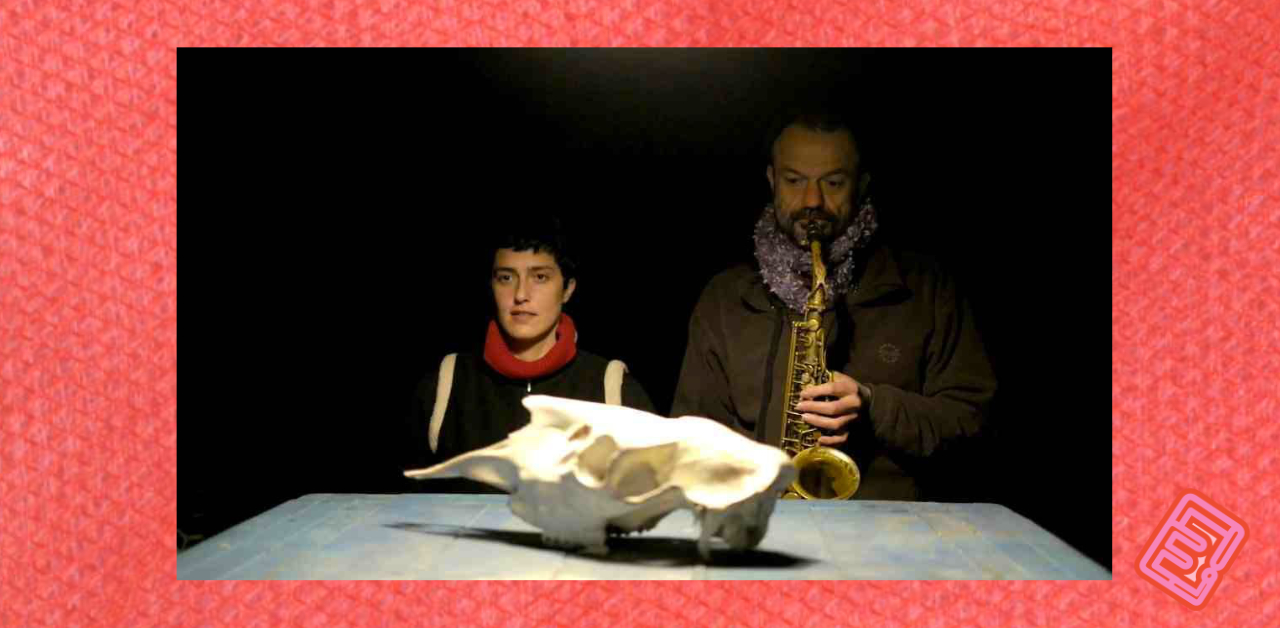
Lotus Eddé Khouri works on performances, shows and videos in which dance, always reduced to its simplest apparatus, is combined with other practices and “in situ” situations, whether daily or singular, with the desire to experience the friction of time, space and mood and thus give the possibility of multiple attentions, for the one who does or the one who watches.
After studying philosophy of art and plastic arts at Paris 1 Sorbonne, Jean-Luc Guionnet devoted himself to music and soundart, through acousmatic composition (“Non-organic bias”), instrumental composition (“Distances ouïes-dites”), instrumental improvisation on saxophone and organ (“Hubbub”, “The ames room”, organ solo, duo with Seijiro Murayama), radio creation (ACR for France Culture) and the creation of sound installations (“Fèn te ko ro, nka kow bè ro kolo ntè”, “Inscape”).
Here some Infos on the piece originally planned for the live performance:
— ce qui dure dans ce qui dure —
Jean-Luc Guionnet and Lotus Eddé Khouri
Saxophone / Dance
Our main task is first to find a common state that we call “OFF”. From this state, will come some decisions that strongly depend on the situation — colors, animals, audience, architecture, health, background noise… Then, what happens has more strategical reasons than physical or organic ones : here is what we call “ON”. On one hand, we try not to be afraid of the void, on the other hand, the form that raises can drive us to exhaustion even if it is very short. Like two miniaturists, we seek space and room in the slightest corner of time. OFF & ON are both of full action.
Hier einige Infos zu dem ursprünglich für die Live-Aufführung geplanten Stück:
— ce qui dure dans ce qui dure —
Jean-Luc Guionnet und Lotus Eddé Khouri
Saxofon / Tanz
Unser Hauptaufgabe wird sein, zunächst einen gemeinsamen Zustand dessen zu finden, was wir “AUS” nennen. Ausgehend davon werden einige Entscheidungen getroffen, die stark von der Situation abhängen – Farben, Tiere, Publikum, Architektur, Gesundheit, Umgebungsgeräusche… Was dann passiert hat mehr strategische Gründe als organische: Dann passiert das, was wir “EIN” nennen.
Einerseits, versuchen wir keine Angst vor der Leere zu haben, andererseits kann uns die Gestalt, die sich daraus bildet zur Erschöpfung treiben, auch wenn sie nur sehr kurz andauert.
AUS & EIN befinden sich beide in voller Aktion

Lotus Eddé Khouri arbeitet an Performances, Shows und Videos, in denen Tanz, immer auf seinen einfachsten Apparat reduziert wird. Mit anderen
Praktiken werden diese kombiniert und Situationen, ob täglich oder einzigartig, mit dem Wunsch, die Reibung der Zeit zu erfahren, in Raum
und Stimmung übergeben. So entsteht die Möglichkeit mehrfacher Aufmerksamkeiten, für den- und diejenigen, die, die zuschaut.
Jean-Luc Guionnet studierte plastischen Künste an der Sorbonne und widmete sich dann der Musik und der Klangkunst, durch akusmatische Komposition (“Non-organic bias”), instrumentale Komposition (“Distances ouïes-dites”), Instrumentalimprovisation auf Saxophon und Orgel (“Hubbub”, “The ames room”, Orgel solo, Duo mit Seijiro Murayama), Radiokreation (ACR für France Culture) und die Schaffung von Klanginstallationen (“Fèn te ko ro, nka kow bè ro kolo ntè”, “Inscape”).
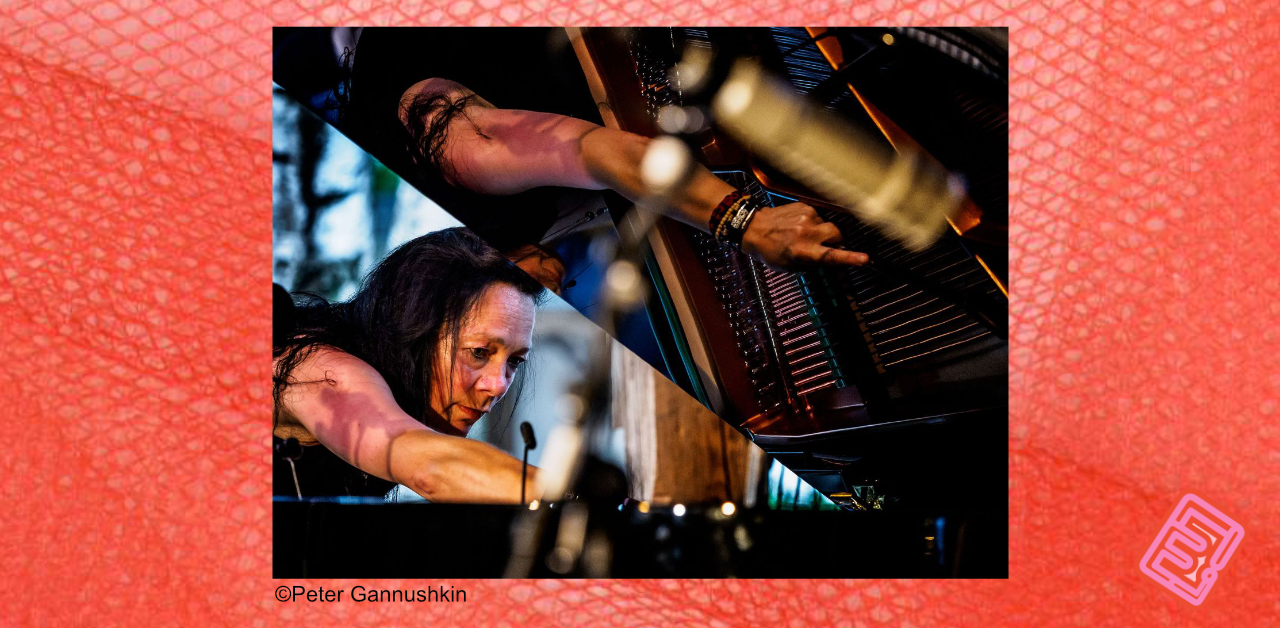
Simone Weißenfels is one of the most distinguished and versatile East German artists in the field of contemporary and classical music as well as in the areas of improvisation up to ambient and noise. She studied at the Leipzig Academy of Music and in Moscow with Prof. A. A. Alexandrov. She often works across genres and is active in the fields of contemporary and classical music, jazz, improvisation and electronica. Since 1999 she has been a piano teacher at the Thomanerchor of the city of Leipzig and for many years also at the Schule Neue Musik.

Simone Weißenfels zählt zu den profiliertesten und vielseitigsten ostdeutschen Künstlerinnen im Bereich der zeitgenössischen und klassischen Musik sowie auf den Gebieten der Improvisation bis hin zu ambient und Noise. Sie studierte an der Hochschule für Musik Leipzig sowie in Moskau bei Prof. A. A. Alexandrov. Sie arbeitet oft genreübergreifend und bewegt sich in den Bereichen zeitgenössische und klassische Musik, Jazz, Improvisation bis electronica. Seit 1999 unterrichtet sie Klavier beim Thomanerchor der Stadt Leipzig und seit vielen Jahren auch an der Schule Neue Musik.
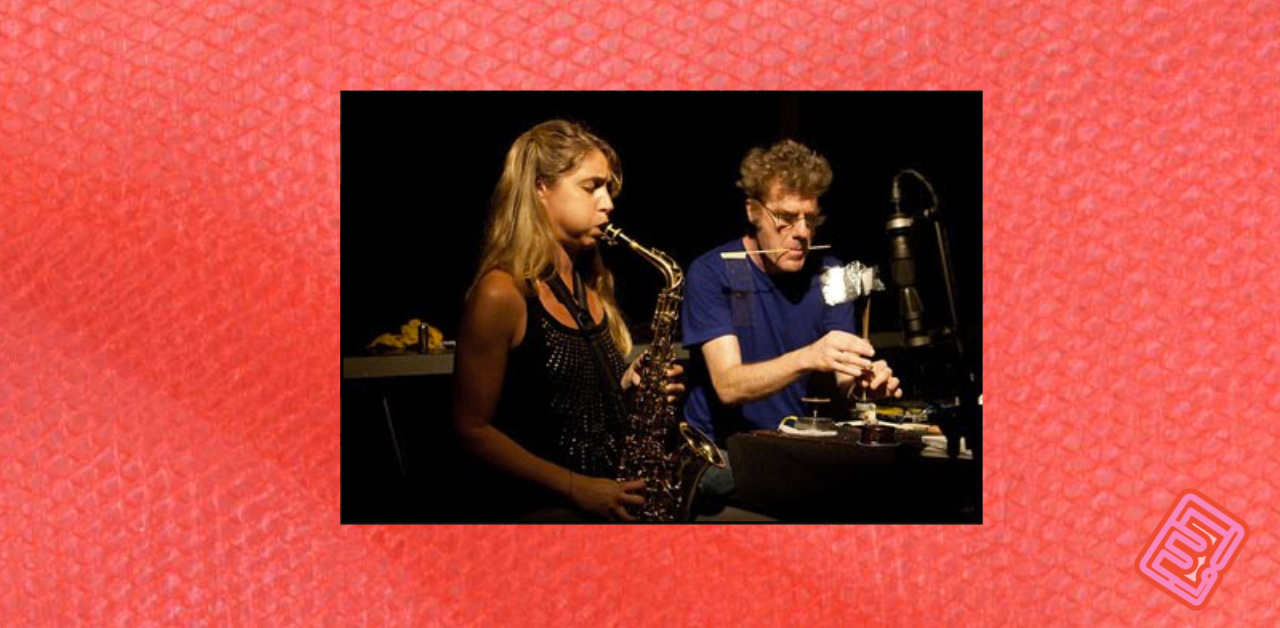
Christine Abdelnour und Pascal Battus trafen sich vor zehn Jahren in Paris, seitdem treten Sie als Duo auf.
Die Mischung ihrer Klänge ist unverkennbar gelungen, absolut faszinierend und ein Angriff auf die Sinne. Sie machen sich den Klang mit einer akustischen Vielfalt zu eigen, die spontan eine tiefere Vorstellung des auditiven Phänomens entwirft.
Im Duo spielt Pascal seine eigene Kreation: Rotierende Mini-Plattformen bestehend aus kleinen motorisierten Komponenten, die aus dem Inneren alter Walkmans stammen. Diese wirken als Reize auf verschiedene Objekte, wie z.B. Papier, Plastik sowie Holz- oder Metallstücke, die wiederum als Vibratoren fungieren.
Christine hat eine sehr persönliche Sprache mit erweiterten Techniken und komplexen Mustern, mit denen sie die mikrotonalen Aspekte des Saxofons, bzw. hoher Töne erforscht. Sie erzeugt raffinierte Zungentricks, angehauchte Atemzüge, spuckende Knurrgeräusche, Beiß- und Schnitttöne oder hauchende Echoklänge aus der Glocke ihres Instruments.

Christine Abdelnour and Pascal Battus met ten years ago in Paris.
The mixture of their sounds is unmistakably successful, quite fascinating, and quite an attack on the senses. They made sound their own with timbral multiplicity that spontaneously delineate a deeper conception of the acoustic phenomenon.
In the duo, Pascal plays his own creation: Rotating mini-platforms consist of small motorised components from inside old Walkmans, used as exciters on different objects acting as vibrators like sheets of paper, cardboards, plastic and wooden or metal pieces.
Christine has also a very personal language with extended techniques and complex patterns, exploring the microtonal aspects of the saxophone or the high-pitched tone. She produces nifty tonguing tricks, unpitched breaths, spittle-flecked growls, biting, slicing notes or breathy echoey sounds from the bell of her horn.
Maximilian Glass lebt in Leipzig, wo er Veranstaltungen organisiert, die Musik seiner Freund*innen veröffentlicht Dj-Sets spielt und beginnt mit seinem eigenen Sounds zu arbeiten. Er ist Teil von Seanaps, einem Leipziger Festival und Gemeinschaft für kurioser Musik. Außerdem ist er für das Label Daizy&Holy verantwortlich.
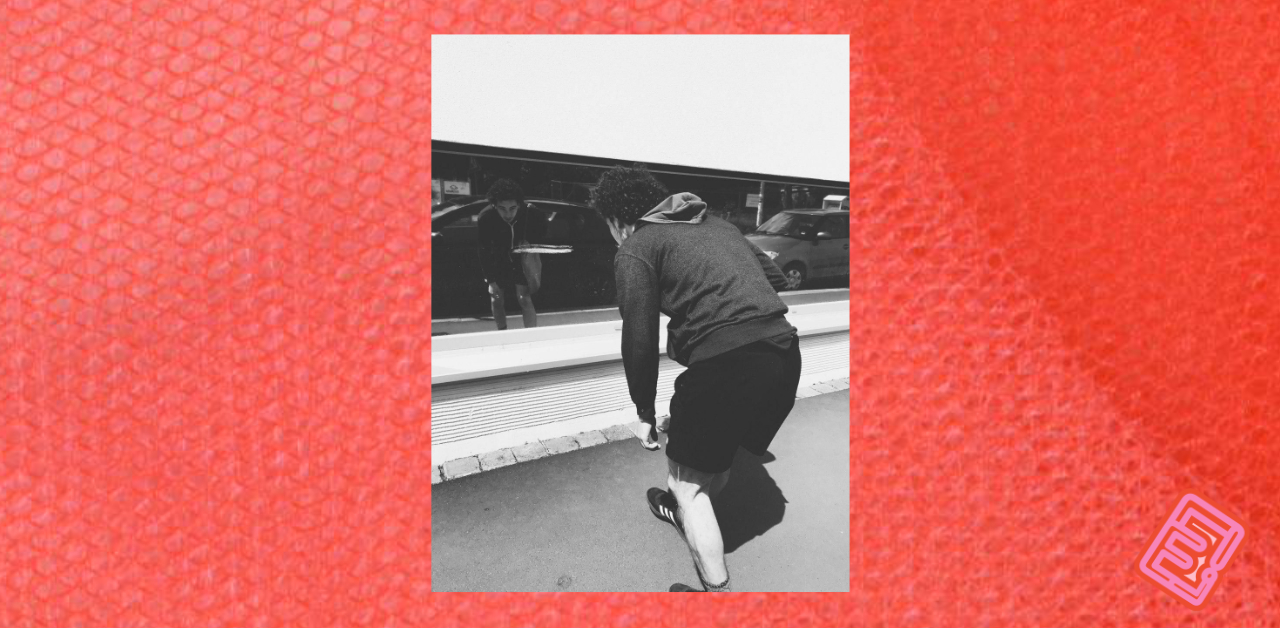
Maximilian Glass lives in Leipzig, where he organises events, releases the music of his friends Dj sets and starts to work with his own sounds. He is part of Seanaps, a Leipzig festival and community for curious music. He is also responsible for the label Daizy&Holy.

Maximilian Glass präsentiert „Miniaturen“, eine Art komprimierte Geschichte von Atemschleifen oder sich wiederholenden Körperdrehungen, irgendwo zwischen fokussierend und fast schon rasant. Enstanden auf der Basis von Tapeloops, welche in Kombination mit einfachen Effekten und einem kleinen Radio ihre Bahnen ziehen.
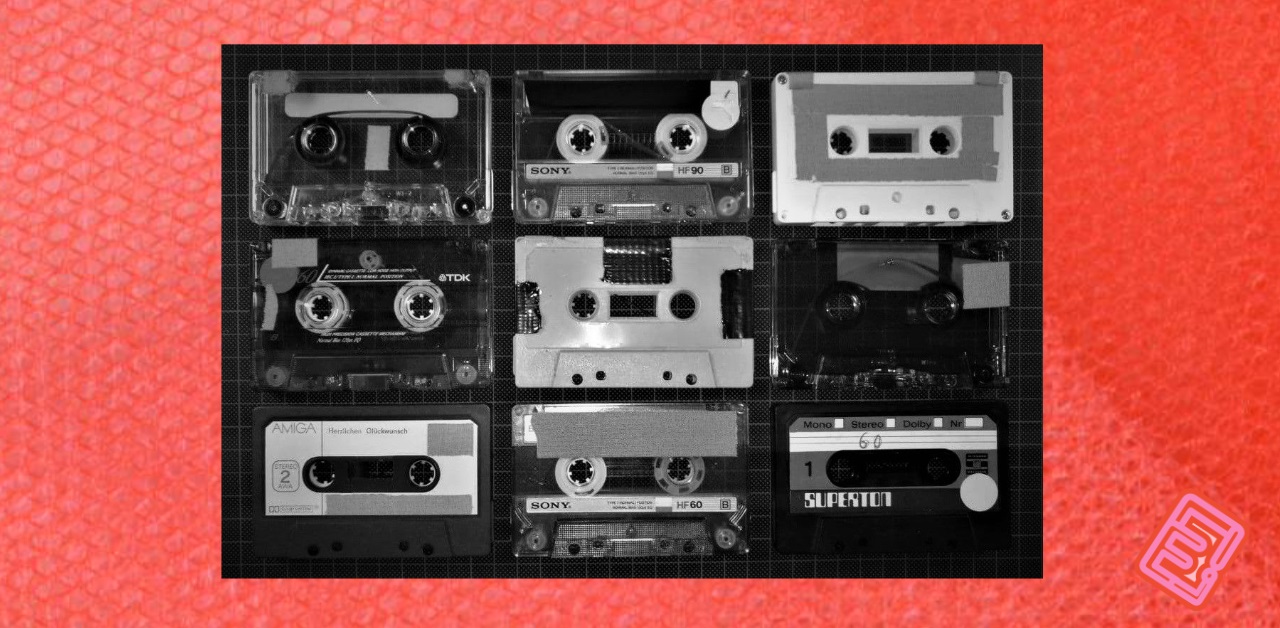
Miniaturen (eng: Miniatures) is a radio-play based on tape-loops which I created with my 4-track-recorderduring the last two years. They are documenting a few sound experiments by using field-recordings, voice, percussion, no-input-feedback and radio-noises. After rediscovering I decided to play them in combination with some simple effects and a small radio which created sounds by switching it on and off or going through the shortwaves. Miniaturen can be described as a compressed story of breathing loops or repetitive body rotation,somewhere between focusing and almost fast-paced.

Wandermusikant, wuchs zwischen Dub-Soundsystem und experimenteller elektronischer Musik auf. Klangforscher, er hat kein bestimmtes Instrument und benutzt alles, was man als solches bezeichnen kann. Er interessiert sich für Radikalität, Reduktionismus, Wiederholungen und konzeptuelle Ansätze, neigt dazu, die kleinsten Details der Elemente herauszuarbeiten, schätzt Langsamkeit und die obsessive Erforschung einfacher Prozesse. Er steht seit vielen Jahren mit Cyril Bondi hinter dem Label & Orchester INSUB., dem Duo Diatribes und vielen anderen Dingen und macht Grafikdesign.
http://www.dincise.net/
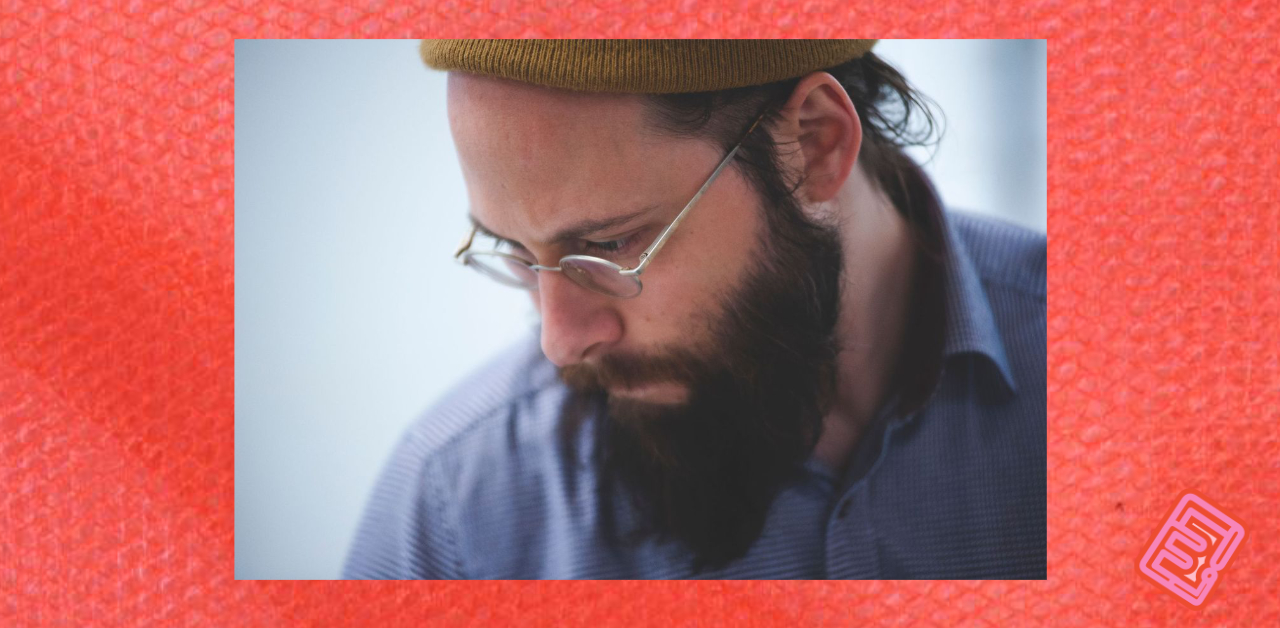
Drifting musician, grew up in between dub sound system and experimental electronic music.Sound explorer, he has no particular instrument, using whatever can be considered as such. He is interested in radicalism, reductionism, repetitions and conceptual approaches.He tends to extract the most tiny details of the elements, appreciates slowness and obsessive explorations of simple processes. He is, since many years with Cyril Bondi, behind the INSUB. label & orchestra, the Diatribes duo, and many other things, and does graphic designs.
http://www.dincise.net/

For LiLe, he will present a new solo performance. It will for sure sound very quiet and centred on microlistening, on soft tones and slow evolution, with diy hotchiku, over diy bamboo organ pipes recordings.
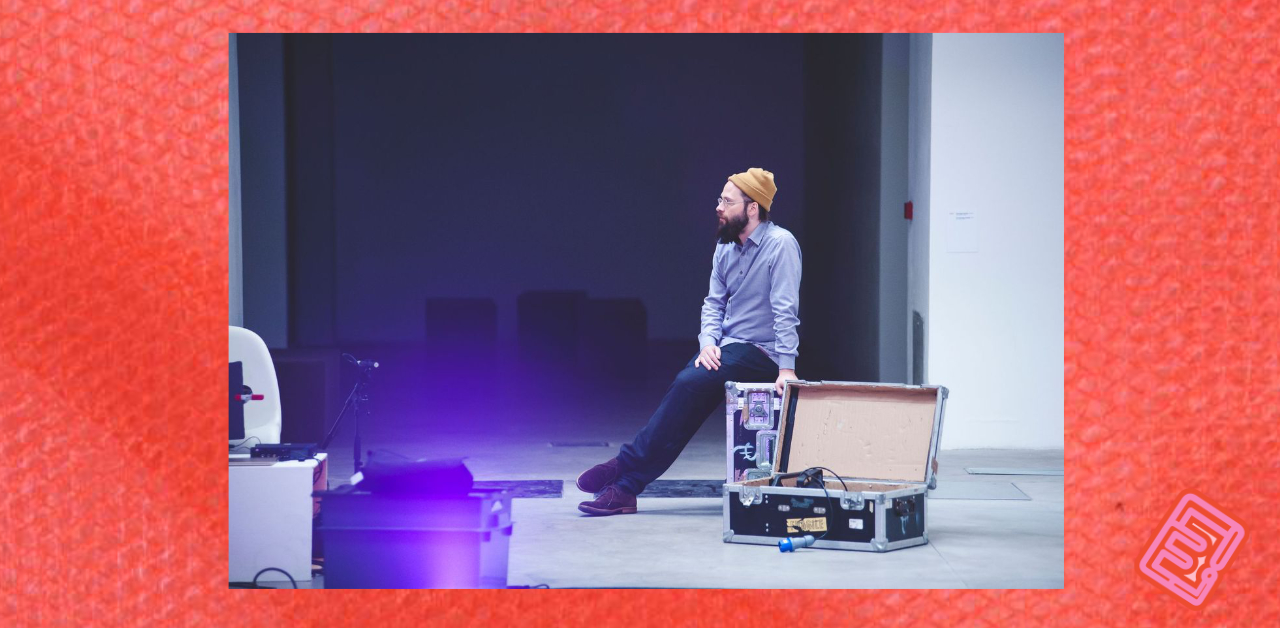
Für LiLe wird er eine neue Soloaufführung präsentieren. Sie wird sicher sehr ruhig klingen und sich auf Mikrohören, auf sanfte Töne und langsame Entwicklung konzentrieren, mit diy hotchiku, über diy Bambusorgelpfeifen Aufnahmen.

Italian-Argentinian musician based in Europe since 2002, specifically in Berlin since 2004. After been educated in classical music at the Conservatory of Morón in Argentina for 10 years, and in Jazz in Argentina, Lyon and New York, Capece has been very active in the Reductionist Improvised Music scene in Berlin ( 2002-2010) and in the radical minimal scene related with the collective Wandelweiser collaborating mainly as co founder and member of the collective Konzert Minimal (2008- 2018), as well as sharing several collaborations with Radu Malfatti since 2006.
Since 2010 he dedicates to offer works focused in the Perception experience, that he performs mainly in solo and in the context of occasional collaborations based in the same interest. He composes his own pieces that may include improvisation and different ways of writing. He uses tools like Flying Speakers hanging from Helium Balloons, Speakers as Pendulums, Analog synthesizer, Sine Waves and Noise Generators, Drum Machines, Ultra- Violet Lights, Sensors as much as the instruments that he has played for 30 years: Bass Clarinet and Soprano and Slide Saxophone.
Beyond instrumentation and tools, the main intention is to focus in the physical-social-spatial human experience.
In the very recent years, his perception research has taken him to re consider the whole practice of music making from a Phenomenological approach.
He has performed his own sound interventions in spaces like Kraftwerk Berlin ( The Long Now – Maerz Musik), Hau Berlin (CTM festival), The Cathedral of Bern (Zoom In Festival) The Mambo Museum in Bologna (Live Arts week ), the German Pavilion built by Mies Van der Rohe in Barcelona (Sonar+D Festival), the Grande Halle d´Expositions built by Alexandre Gustave Eiffel in Evreux, France (L ́Atelier series) the Bauhaus Archive in Berlin (directing a piece in which together with musicians Axel Dörner and Robin Hayward played a piece with the kinetic sculpture called “Licht-Raum Modulator” built by Lászlò Moholy- Nagy), and the Colón Theatre in Buenos Aires where he offered an interactive installation for children.
Capece has played and released CDs and LPs with musicians like Mika Vainio, Olivia Block, Radu Malfatti, Kevin Drumm, Keith Rowe, Annette Krebs, Vladislav Delay, Lee Patterson, Taku Sugimoto, Julia Eckhardt, Rhodri Davies, Ilpo Väisänen, David Sylvian, Christoph Nicolaus, Rasha Ragab, etc among others.
As a performer he has worked with Pauline Oliveros, Peter Ablinger, Antoine Beuger, Michael Pisaro, Christian Wolff, Phill Niblock, among others.
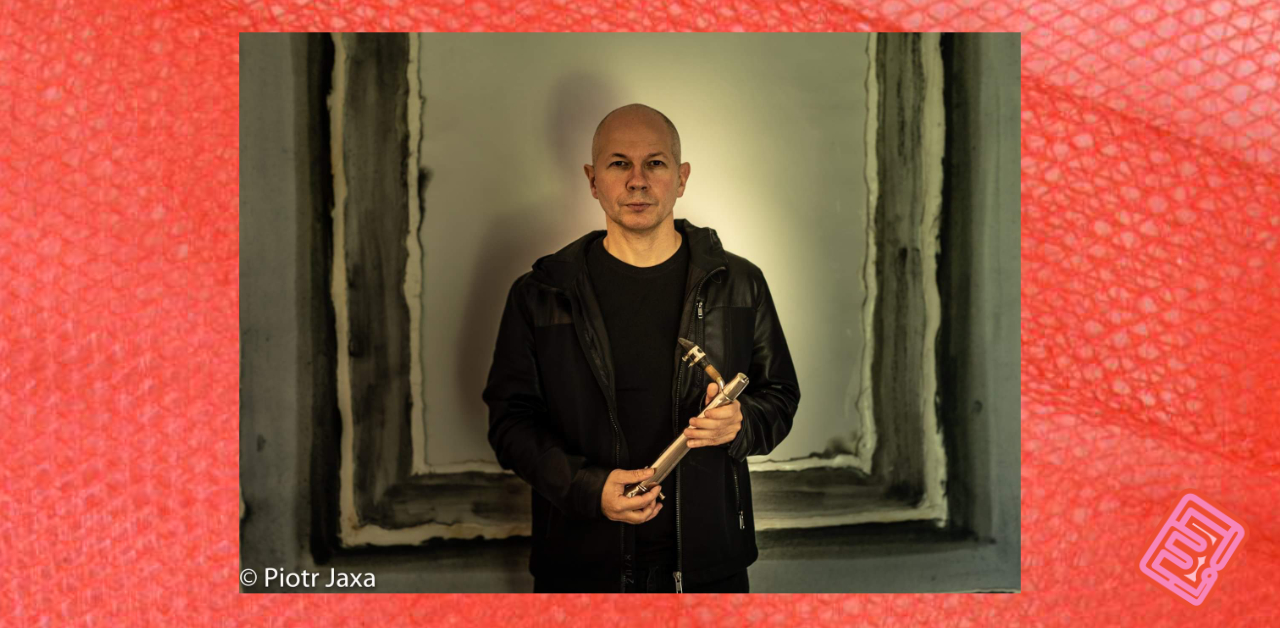
Italienisch-argentinischer Musiker, seit 2002 in Europa ansässig, seit 2004 besonders in Berlin. Nach einer 10-jährigen Ausbildung in klassischer Musik am Konservatorium von Morón in Argentinien und im Jazz in Argentinien, Lyon und New York war Capece sehr aktiv in der Szene der reduktionistischen improvisierten Musik in Berlin (2002-2010) und in der radikalen Minimal-Szene, die mit dem Kollektiv Wandelweiser verbunden ist, mit dem er hauptsächlich als Mitbegründer und Mitglied des Kollektivs Konzert Minimal (2008-2018) zusammen und seit 2006 in Kooperationen mit Radu Malfatti arbeitete.
Seit 2010 widmet er sich Werken, die sich auf die Erfahrung der Wahrnehmung konzentrieren, die er hauptsächlich als Solist und im Rahmen gelegentlicher Kollaborationen aufführt. Er komponiert seine eigenen Stücke, die Improvisation und verschiedene Schreibweisen beinhalten können. Er verwendet verschiedene Geräte und Instrumente wie fliegende Lautsprecher, die an Heliumballons hängen, Lautsprecher als Pendel, Analogsynthesizer, Sinuswellen- und Geräuschgeneratoren, Trommelmaschinen, ultraviolette Lichter, Sensoren ebenso wie die Instrumente, die er seit 30 Jahren spielt: Bassklarinette und Sopran- und Slide-Saxophon.
Über die Instrumentierung und die Werkzeuge hinaus ist die Hauptabsicht, sich auf die physisch-sozial-räumliche menschliche Erfahrung zu konzentrieren.
In den letzten Jahren hat ihn seine Wahrnehmungsforschung dazu gebracht, die gesamte Praxis des Musizierens aus einem phänomenologischen Ansatz heraus neu zu betrachten.
Er hat seine eigenen Klanginterventionen in Räumen wie Kraftwerk Berlin ( The Long Now – Maerz Musik), Hau Berlin (CTM Festival), der Kathedrale von Bern (Zoom In Festival), dem Mambo-Museum in Bologna (Live Arts week ), dem von Mies Van der Rohe erbauten Deutschen Pavillon in Barcelona (Sonar+D Festival), der von Alexandre Gustave Eiffel erbauten Grande Halle d’Expositions in Evreux durchgeführt, Frankreich (Reihe L ́Atelier), dem Bauhaus-Archiv in Berlin (Regie bei einem Stück, in dem Axel Dörner und Robin Hayward zusammen mit den Musikern ein Stück mit der kinetischen Skulptur “Licht-Raum Modulator” von Lászlò Moholy- Nagy spielten), und dem Theater Colón in Buenos Aires, wo er eine interaktive Installation für Kinder anbot.
Capece hat CDs und LPs mit Musikern wie Mika Vainio, Olivia Block, Radu Malfatti, Kevin Drumm, Keith Rowe, Annette Krebs, Vladislav Delay, Lee Patterson, Taku Sugimoto, Julia Eckhardt, Rhodri Davies, Ilpo Väisänen, David Sylvian, Christoph Nicolaus, Rasha Ragab u.a. eingespielt und veröffentlicht.
Als Performer hat er u.a. mit Pauline Oliveros, Peter Ablinger, Antoine Beuger, Michael Pisaro, Christian Wolff, Phill Niblock usw. zusammengearbeitet.

In 2019 I was invited to do a sound intervention at an Art show based in works by Christina Ertl-Shirley and Paul Lubitz made with Poplar wood.
I remembered that in my parents house in Argentina one Poplar tree was taken down by a Tornado while I was there visiting my family.
My father had placed several Poplar trees as a wall in front of the main window of the living room where him and my mother spend the greatest part of their time, as a way to cool down the temperature of the room. They had to do it as an answer to the growing temperature due to global warming. To place Poplar trees doing this, is a usual practise in Patagonia, where they protect country houses from the wind.
The fall of the tree was kind, barely touching the wall of the house, but expressed a new development of the warmth growing that affects our planet, The zone where my parents live had never been a Tornado zone till then, and these storms, that now happen over there usually at a same period of the year, show one more aspect of the growing danger in which nature has been placed for it´s own life, including the humans one.
The piece i made, based on my own photos, field recordings by Christina Ertl Shirley, an interview to my father, sine tones and 4 melodies played with Bass clarinet, and mini speakers in feedback, became a humble documentation on how global warming and lack of care on nature affects our lives not only as an hypothetical threat in the future. But also, and mainly, of the pass of a tree, a single living creature, through our lives.
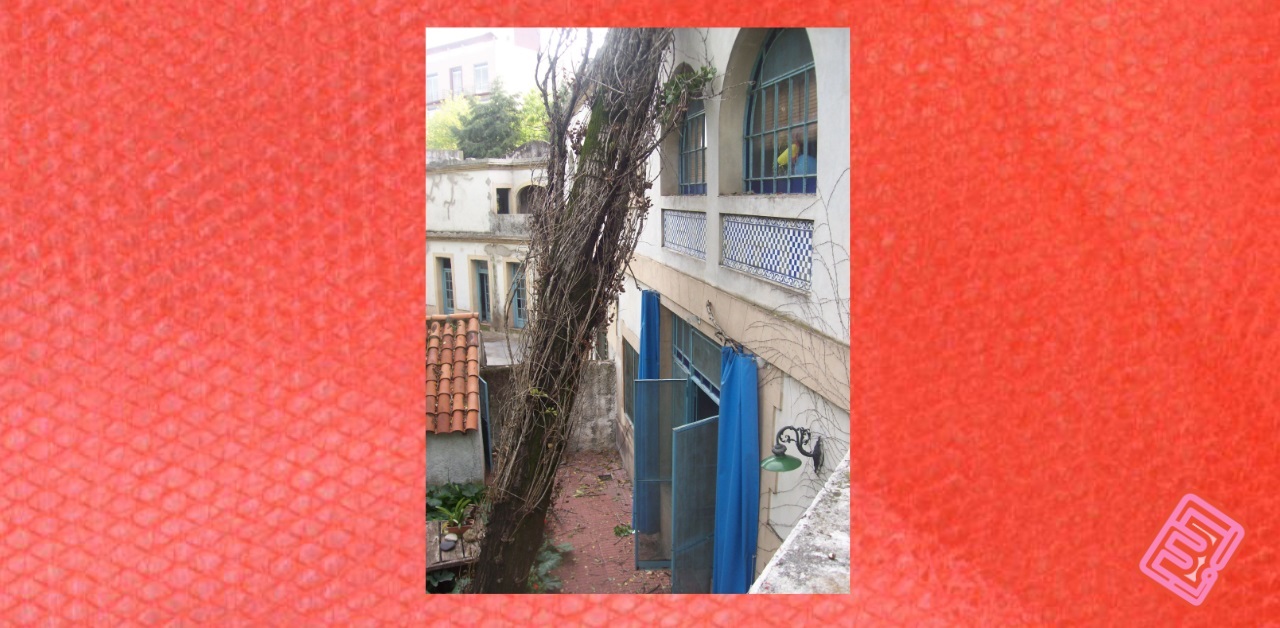

Karoline Schulz versucht sich auf verschiedenen Wegen dem Phänomen Musik zu nähern. Nach einem Orchestermusikstudium spielt sie als Flötistin in Orchestern und Kammermusikgruppen. Wichtige Impulse für die Interpretation zeitgenössischer Musik gab ihr ein Jahr in der Ensembleakademie des Ensemble modern in Frankfurt. Sie studierte Komposition bei Jörg Herchet und schrieb Kammermusik und Orchesterkompositionen. Eine weitere wichtige Erfahrung war und ist die Beschäftigung mit freier Improvisation im sächsischen Improvisationsensemble und der Neuen Dresdner Kammermusik. Als Flötenlehrerin und Kompositionspädagogin in der Komponistenklasse Halle setzt sie sich mit musikpädagogischen Fragen auseinander.
Martin Schulze wurde 1979 in Dresden geboren. Er kam von der Blockflöte über die Gitarre schließlich zur Posaune. Zunächst spielte er in verschiedenen Bigbands, Funk-, Soul- und Jazzbands. Martin Schulze studierte an der Musikhochschule in Dresden und am Konservatorium in Amsterdam und interessiert sich vor allem für improvisierte Musik, zeitgenössische komponierte Musik und Freejazz. Er spielt in verschiedenen Projekten frei improvisierter Musik, in der Banda Comunale, organisiert Konzertreihen für improvisierte und experimentelle Musik im Atelier Petra Schulze und in der Galerie Adam Ziege. Er unterrichtet Posaune und ist seit 2010 Mitglied und Vorstand im Verein BlaueFabrik. Mitglied des Ensembles “Neue Dresdner Kammermusik” seit 2010. Mitglied des “Sächsischen Improvisations Ensembles (s.i.e.)”.
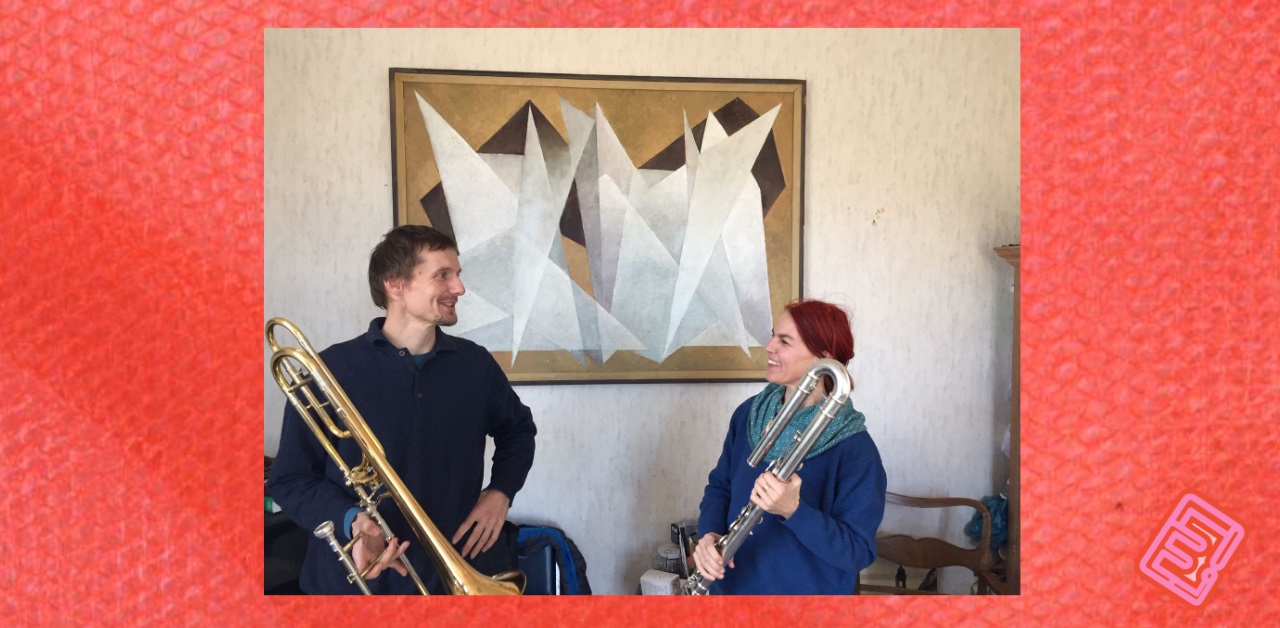
Karoline Schulz tries to approach the phenomenon of music in different ways. After studying orchestral music, she plays as a flutist in orchestras and chamber music groups. A year in the Ensemble Academy of the Ensemble modern in Frankfurt gave her important impulses for the interpretation of contemporary music. She studied composition with Jörg Herchet and wrote chamber music and orchestral compositions. Another important experience was and still is the occupation with free improvisation in the Saxon Improvisation Ensemble and the New Dresden Chamber Music. As a flute teacher and composition teacher in the composers’ class in Halle, she deals with music pedagogical questions.
Martin Schulze was born in Dresden in 1979. He went from the recorder via the guitar eventually to the trombone. At first he played in various big bands, funk, soul and jazz bands. Martin Schulze studied at the conservatory in Dresden and the conservatory in Amsterdam and is mainly interested in improvised music, contemporary composed music and free jazz. He plays in various projects of free improvised music, in the Banda Comunale, organises concert series for improvised and experimental music in the Atelier Petra Schulze and in the Adam Ziege Gallery. He teaches trombone and has been a member and board member of the BlaueFabrik association since 2010. He is a member of the ensemble “Neue Dresdner Kammermusik” since 2010 and of the “Sächsisches Improvisations Ensemble (s.i.e.)”.

Karoline Schulz and Martin Schulze have been playing improvised music together for many years in the Ensemble Neue Dresdner Kammermusik. For this concert they wanted to improvise together as a duo for the first time. Corona changed everything; instead of a concert with an audience, it will be a recording in the empty studio of Hanse 3, an alternative Art space on the grounds of the Old Leipzig Station in Dresden (very appropriate) with passing trains and autumn sun through the window: pure improvisation – nothing was planned, simply played with the desire to make music and trusting each other’s ears and what will be created together in the moment.
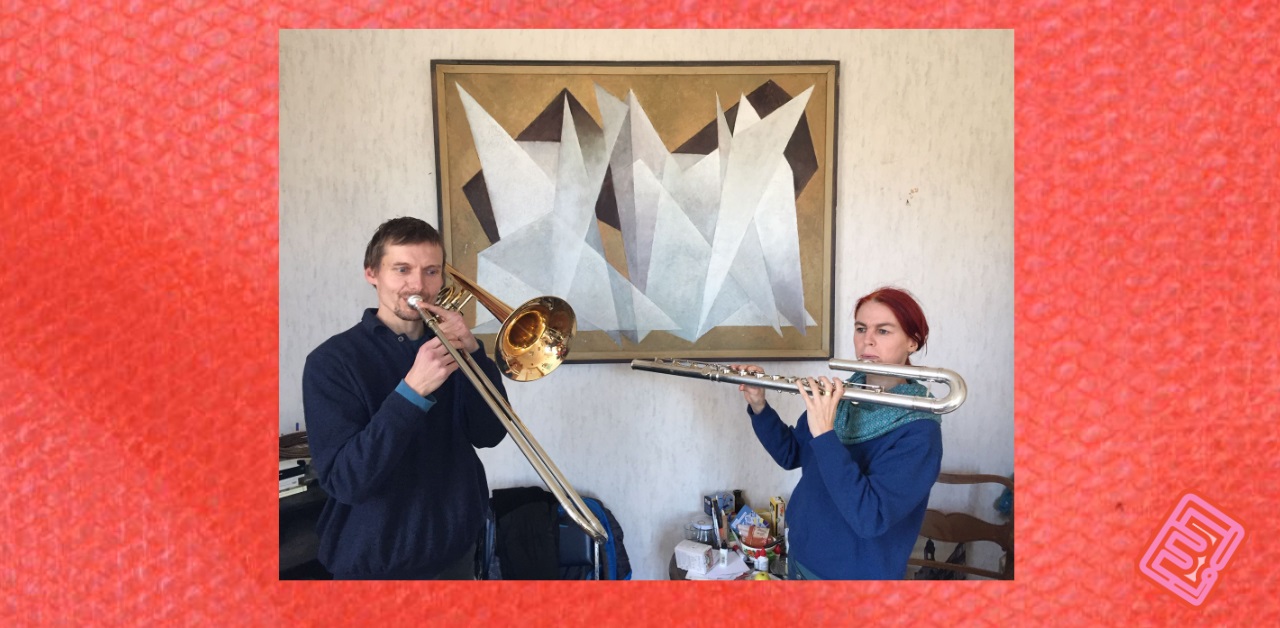
Karoline Schulz und Martin Schulze spielen seit vielen Jahren zusammen improvisierte Musik im Ensemble Neue Dresdner Kammermusik. Für dieses Konzert wollten sie erstmals als Duo zusammen improvisieren. Corona hat alles verändert; statt eines Konzertes mit Publikum blieb eine Aufnahme im leeren Atelier der Hanse 3, einem alternativen KUNST-ORT auf dem Gelände des Alten Leipziger (sehr passend) Bahnhofs in Dresden mit vorbeifahrenden Zügen und Herbstsonne im Fenster: Improvisation pur – nichts war geplant, einfach gespielt mit der Lust, Musik zu machen und im Vertrauen auf die Ohren und das, was im Augenblick miteinander entstehen wird.

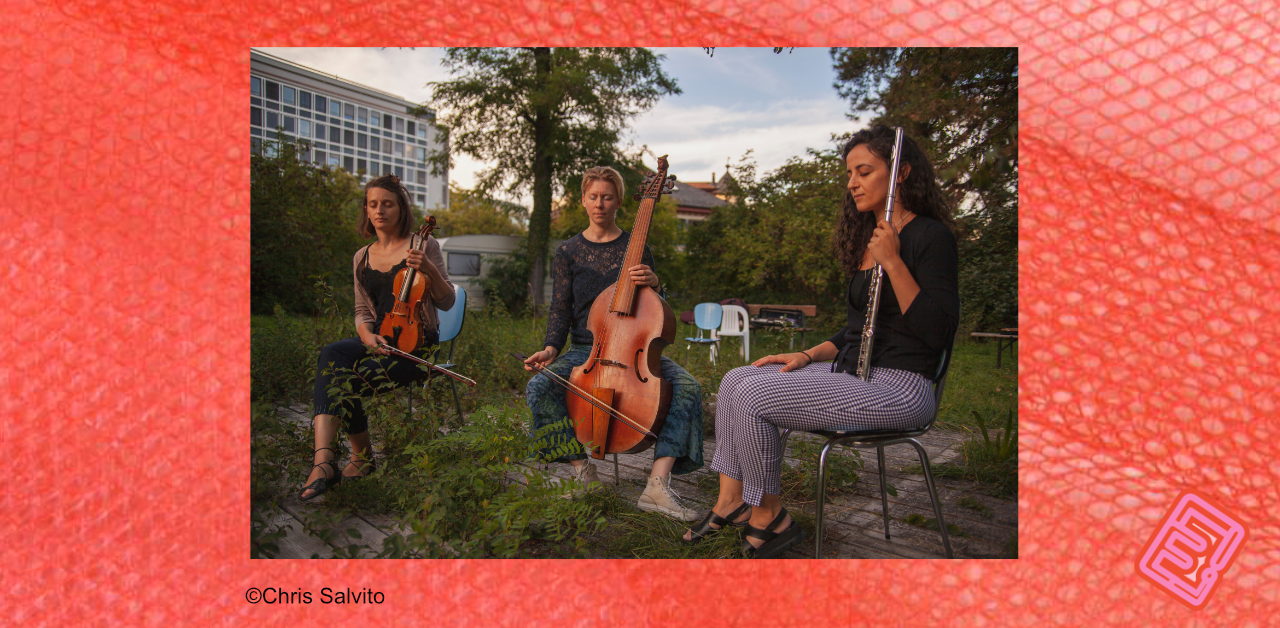
Anna-Kaisa Meklin
geboren in Finnland, lebt seit 2003 als freischaffende Musikerin in Basel. Sie improvisiert mit Viola da Gamba, Stimme und fieldrecordings,und gestaltet Klanginstallationen. Ihre Projekte sind oft an der Schnittstelle von verschiedenen musikalischen Genres, wie zum Beispiel zwischen alter Musik und experimenteller Musik, zu verorten. Sie spielt mit den improvisierenden Grossformationen InsubMetaOrchestra(Genf) und der unorthodoxjukebox o.(Basel) und ist aktiv in vielen kleineren Formationen in der freien Szene. Sie war Artist in Residence 2019 @ Embassy of Foreign Artists, Genf.
Marina Tantanozi (*1985)
ist eine Flötistin, Improvisatorin und Klangkünstlerin, die in Thessaloniki (GR) geboren wurde und in Basel (CH) lebt. Sie ist in vielfältigen Projekten zwischen Improvisation, zeitgenössischem Jazz, Neuer Musik und Klanginstallation tätig und hat in zahlreichen Projekten in ganz Europa mit Künstler*innen aus verschiedenen Disziplinen – wie Tanz, Theater und bildender Kunst – zusammengearbeitet. Als Musikerin und Performerin war sie unter anderem mit dem White Desert Orchestra, Joyful Noise, Insub Meta Orchestra, Aquaserge und der Sinfonietta Basel auf Tournee. Festival- und Clubauftritte führten sie durch ganz Europa und Russland. Sie studierte Improvisation, Musikwissenschaften, Musikpädagogik und Querflöte und ist seit 2015 Kuratorin von KlangBang, einer Konzertreihe, die sich der improvisierten Musik in Basel Schweiz widmet.
Anouck Genthon
is a violinist, improviser and ethnomusicologist. She anchors her work in the development of her own improvised language through the experience of sound and listening. She plays in various contexts at the crossroads of improvised, experimental, contemporary, electroacoustic and traditional music through various projects from solo to large ensemble (solo aẓǝl, duo w/Jacques Demierre, Mathias Forge, Antoine Läng, David Meier, tangent + mek trio, TANDEM trio, Quatuor LGBS, Insub Meta Orchestra, Le UN, Le Recueil des Miracles). She likes to engage in transversal forms of research forms such as sound poetry, theatre and dance (Tǝɣǝrit w/ Jacques Demierre, duo w/Tamara Bacci, Follow the line w/Florence Freitag, The languages came first. The country after., Laborintus X…). His work is published by Newwaveofjazz, Another Timbre, Confront Recordings, UNRec, Insub. Records, Le petit label, Thödol. She is a member of @ptt in Geneva (promotion of acoustic art in the fields of music, language and visual arts). She is the author of ‘Tuareg Music. From political symbolism to aesthetic singularization’ (L’Harmattan, 2012) on the singuarization process of Tuareg contemporary Ishumar music in Niger (UdM Montréal / EHESS Paris).
https://anouckgenthon.com
https://soundcloud.com/anouckgenthon
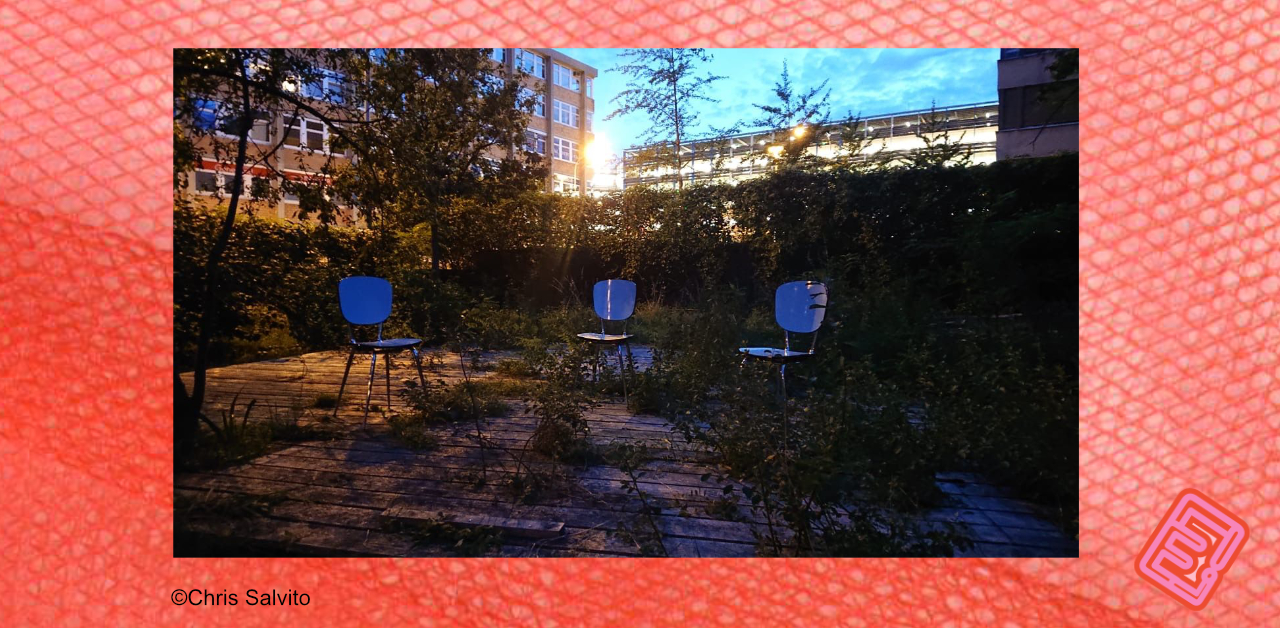
Für die Musik des Trios dient ein offenes Klangfeld, wo vieles Platz haben kann und möglich erscheint, als Ausgangspunkt. Stilistisch dominieren dichte oder durchbrochene Klangflächen, doch auch gestalthafte kammermusikalische Strukturen gehören zum Repertoire. Drei akustische Instrumente, die aber weit davon weg führen was man erwarten würde. Sanft aber bestimmt führen die Drei die Zuhörenden ins Innere der Klänge. Das reiche klangliche Spektrum, das jede mit sich einbringt, ergibt endlose Kombinationsmöglichkeiten. Barocke, Free Jazz oder folkloristische Klanglichkeiten können hörbar werden, doch bleiben diese eher ferne Assoziationen. Stille ist immer eine Option.

The music of the trio is an open-ended sonic space. Dense or broken, the sound surfaces and structures are continuous, oscillating between noise, drone and traces of folk music material, that remain rather distant associations. Three well-known acoustic instruments heard in tonal proportions far removed from what one would expect. Since each musician brings in a rich spectrum of tonal differentiation, there are many possible combinations. Gently but surely the three lead the listener into the interior of the sounds. Their music includes shaped chamber-musical structures, and silence is always an option.
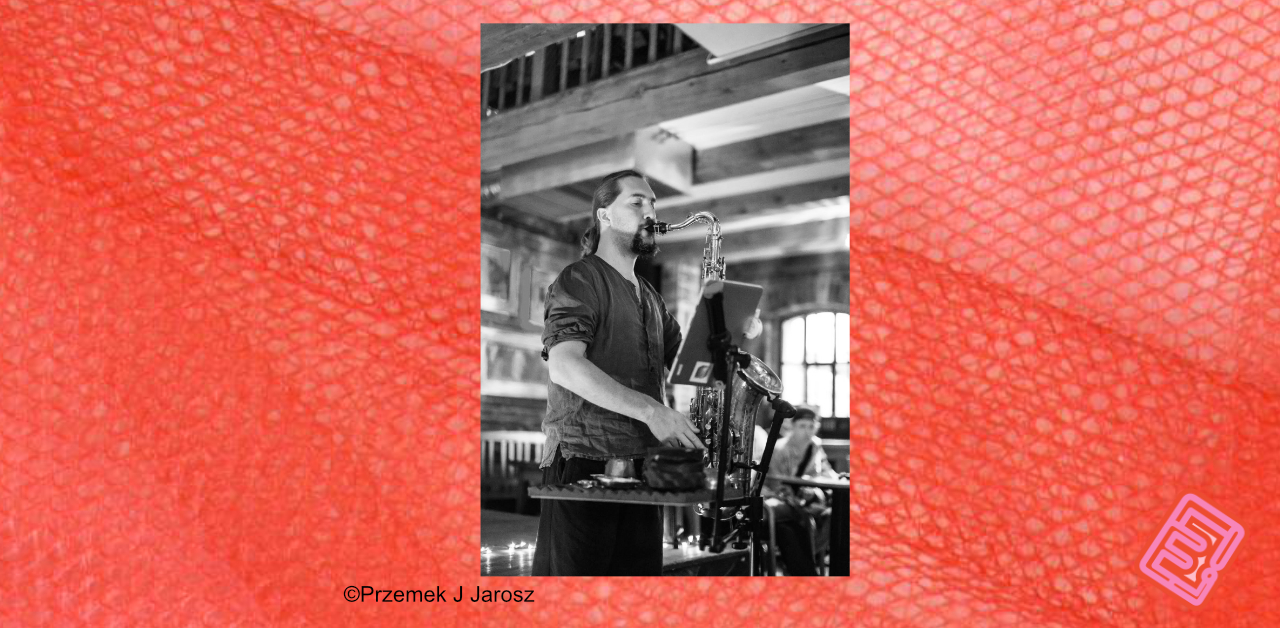
„Lignes“ (dt. Linie) ist mein Tenorsaxophon-Solo. Es ist eine Schnittstelle zwischen Improvisation, Komposition und Aufstellung im Kontext der experimentellen Musik. Das Saxophon steht auf einem Stativ, welches mehr Stabilität bietet und es ermöglicht, den Musiker und das Instrument zu distanzieren. Die Tasten der rechten Hand sind zugemacht, so dass verschiedene Gegenstände, die das Ganze begleiten, nach Belieben benutzt werden können. Das Instrument wird dann zu einem eigenständigen Klangkörper, der auch für seine Materialität ausgenutzt, zerkratzt oder gerieben werden kann. Objekte multiplizieren die Sound-Fähigkeiten des Saxofons und öffnen die Möglichkeit, Schwebungen, Multiphonics oder Resonanzen zu kriegen, die nicht auf dem nacktem Instrument erreichbar sind. Dadurch wird das Saxofon eine Perkussionsinstrument oder ein Luftsynthesizer.
Seit Ende 2013 nutze ich einen Rechner und einen kleinen Bluetooth Lautsprecher, um elektronische Geräusche in dem Saxofonkörper abzuspielen. Dadurch wird das Saxofon ein Resonanzboden oder ein Akustikfilter. Dies ist eine Umkehrung der üblichen Situation in der elektroakustischen Musik, da hier das Instrument das elektronische Signal verarbeitet und nicht umgekehrt.

„Lignes“ (Lines in French) is my tenor saxophone solo. It is at the crossroad between improvisation, composition and device in the context of experimental music. The saxophone stands on a tripod, which offers more stability and makes it possible to distance the musician from the instrument. The right-hand keys are locked so that various items can be used at will with the freed right hand. The instrument then becomes a resonant body, which can also be used for its materiality, scratched, rubbed… Objects multiply its sound possibilities and open the possibility of beats, multiphonics or resonances that are not accessible on the naked instrument. This transforms the saxophone into a percussion instrument or an air synthesizer.
Since late 2013 I use a computer and a small Bluetooth speaker to play electronic noises in the saxophone’s body. It thus becomes a resonant chamber or an acoustic filter. This is a reversal of the usual situation in electroacoustic music, as here the instrument processes the electronic signal, and not the other way around.
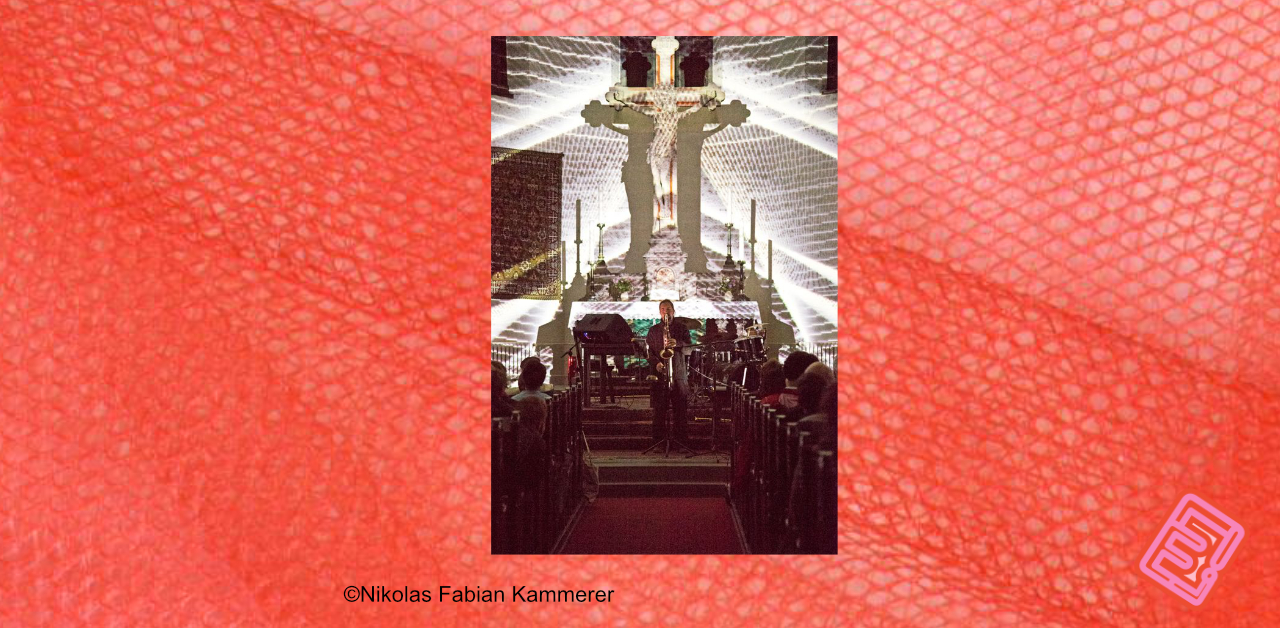
Sébastien, born in France in 1980, plays soprano, tenor and C-melody saxophones. He got started with improvisation through workshops with musicians coming from contemporary jazz or improvised music.
Interested in perceptive phenomenons, he works mainly with sound as a material, describing himself as a “sound crafter” for an audience to listen to. His interests also extend to body and space, as he regularly confronts his practice to contemporary dance.
He plays in the saxophone duet Relentless, in duet with viola player Cyprien Busolini or electronics musician Miguel A. Garcia, in large orchestra with IMO, and regularly meets other artists, either for private sessions or performances. He also works on solo performances with tenor sax on a stand and light electronics (Lignes) or soprano saxophone and water (saxopH2One).
He’s also working as a sound artist, mainly in cooperation with French Photographer Diane Martinot with whom he works on ways to mix sound and light in different ways.
He has played around Europe in various venues and festivals, for concerts, dance performances or soundwalks.
Sébastien taught Mathematics in high school and also gave a workshop about soundscapes there. In April 2015, he moved to Leipzig and devotes his time to shiatsu and to his music. Since 2018 he organises “ZiXP”, a festival for experimental music dedicated to the local scene.

Sébastien Branche, geboren in Frankreich in 1980, spielt Soprane, Tenor und C-Melody Saxofone. Er hat mit Improvisation durch Workshops angefangen, zusammen mit Musikern welche aus dem zeitgenössischen Jazz oder freien Improvisation kommen.
An Wahrnehmung als Phänomen interessiert, arbeitet er hauptsächlich mit Klang als Material und bezeichnet sich selbst als „Klanghandwerker“. Seine Praxis erstreckt sich auch auf Körper und Raum, da er sie regelmäßig mit zeitgenössischem Tanz konfrontiert.
Er spielt im Saxophon-Duett Relentless, im Duett mit dem Viola-Spieler Cyprien Busolini oder dem elektronischen Musiker Miguel A. Garcia, im Großorchester mit dem IMO und trifft regelmäßig andere Künstler, entweder für private Sessions oder Performances. Er arbeitet auch an Solo-Performances mit dem Tenorsaxophon auf einem Stativ und Elektronik (Lignes) oder Sopransaxophon und Wasser (SaxopH2One).
Sein Interesse gilt auch der Klangkunst und er arbeitet mit der Fotografin Diane Martinot zusammen, um Klang und Licht auf unterschiedliche Weise zu mischen oder an Installations mitzuarbeiten.
Er hat an verschiedenen Orten und Festivals in ganz Europa gespielt, für Konzerte, Tanzaufführungen oder Klangspaziergänge.
Sébastien hat Mathematik in der Oberschule neben Paris. Seit April 2015 wohnt er in Leipzig und widmet er sich Shiatsu und Musik. Seit 2018 organisiert er „Zixp“ – ein Festival für experimentelle Musik, dass sich die lokale Szene widmet
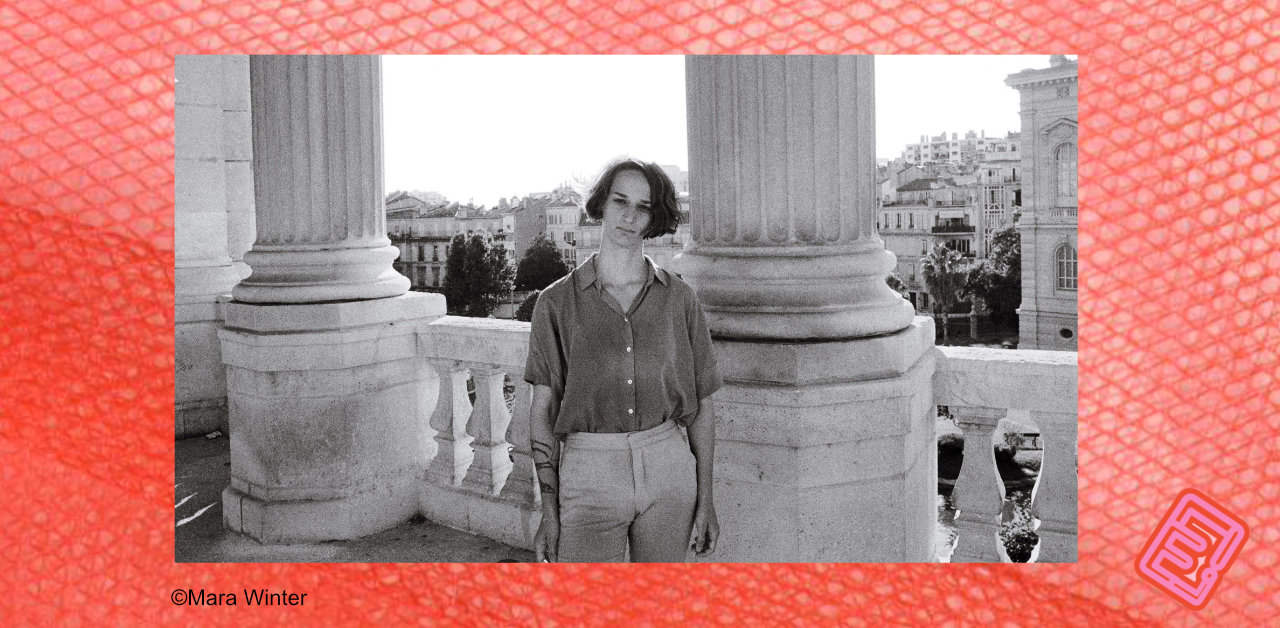
Clara de Asis is a composer and performer highlighting simplicity and active listening as means of music making. Her works display an extreme precision and intuitive openness that involves a dedicated attention to sound on its details and its most pure forms. As well as guitar as her main instrument, she uses different combinations of objects, materials and sound sources, incorporating electroacoustics and minimal approaches.
Her music has been showcased in Europe, America and Asia; and it’s edited by eminent record labels such as Marginal Frequency, Another Timbre, Elsewhere and Pilgrim Talk.
Some of her collaborations include Bruno Duplant, d’Incise, Rebecca Lane, Lauri Hyvärinen, Farida Amadou, Patrick Farmer, Greg Stuart, Erik Carlson, Mara Winter. She also curates the Ernestine concert series since 2018, and co-directs the record label Discreet editions.
https://www.claradeasis.com/
https://claradeasis.bandcamp.com/
https://vimeo.com/claradeasis
https://soundcloud.com/claradeasis

Clara de Asis ist eine Komponistin und Interpretin, die Einfachheit und aktives Zuhören als Mittel zum Musizieren einsetzt. Ihre Werke weisen eine extreme Präzision und intuitive Offenheit auf, die dem Klang seine Aufmerksamkeit auf Details sowie auf die reinen Formen widmet. Mit der Gitarre, als ihr Hauptinstrument, verwendet sie verschiedene Kombinationen von Objekten, Materialien und Klangquellen, wobei sie auf Elektroakustik und Minimalansätze zurückgreift.
Ihre Musik wurde in Europa, Amerika und Asien präsentiert; und wurde von den renommierten Schallplattenfirmen wie Marginal Frequency, Another Timbre, Elsewhere und Pilgrim Talk herausgegeben.
Zu ihren Mitstreiter*innen gehörten Bruno Duplant, d’Incise, Rebecca Lane, Lauri Hyvärinen, Farida Amadou, Patrick Farmer, Greg Stuart, Erik Carlson, Mara Winter. Zudem kuratierte sie seit 2018 die Ernestine Konzertserie und ist Co-Direktorin des Plattenlabels Discreet editions.
https://www.claradeasis.com/
https://claradeasis.bandcamp.com/
https://vimeo.com/claradeasis
https://soundcloud.com/claradeasis
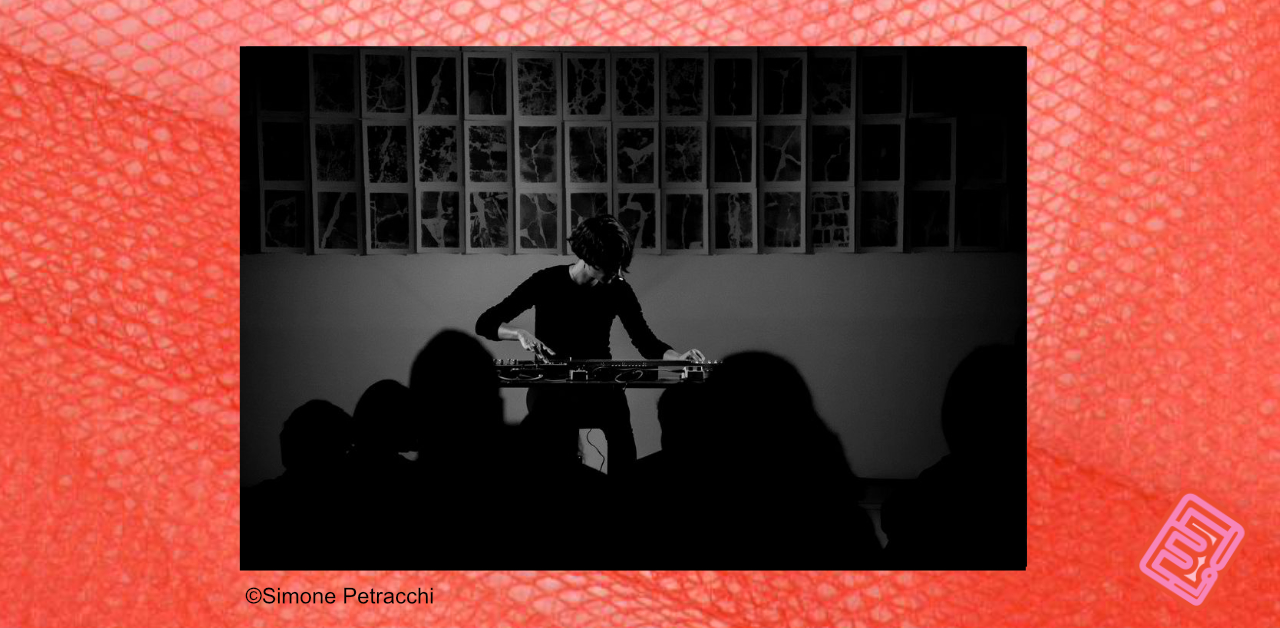
Clara de Asís will present a sound piece that invokes the sensoriality of deep listening. An exploration of the imperceptible where the boundaries between the audible and the inaudible, permanence and disappearance, movement and stillness, dissipate.

Clara de Asís wird ein Klangstück präsentieren, das die Sinnlichkeit des tiefen Zuhörens hervorruft. Eine Erforschung des Unwahrnehmbaren, wo die Grenzen zwischen dem Hörbaren und dem Unhörbaren verwischen, Dauerhaftigkeit und Verschwinden, Bewegung und Stille, Zerstreuung.
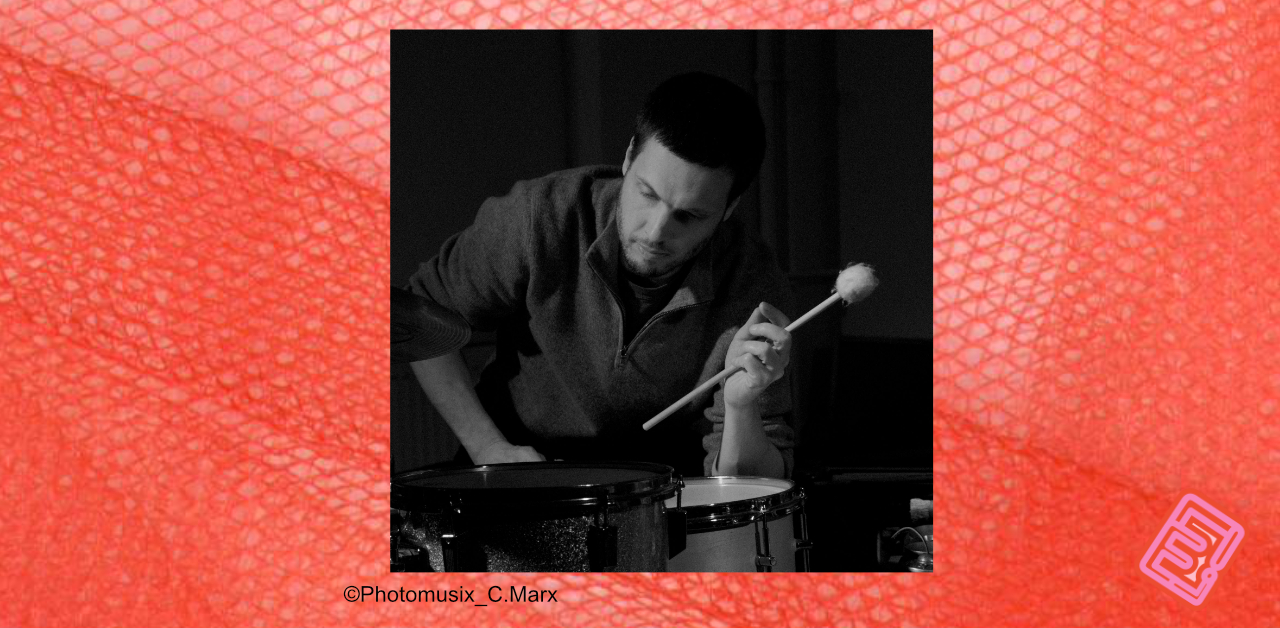
Hannes Lingens (*1980 near Hamburg) is a musician and composer based in Halle (Saale) and Berlin. As a composer, drummer and accordion player, he focusses mainly on the intersection between improvised and composed forms of experimental music. He is part of the Ensembles Obliq, Musaeum Clausum and Die Hochstapler and works regularly with artists like Peter Ablinger, Félicie Bazelaire, Johnny Chang, Sven-Åke Johansson, Toshi Nakamura, Phill Niblock, Chiyoko Szlavnics and John Tilbury. He is a co-founder of the musicians collective Umlaut Berlin.

Hannes Lingens (*1980 bei Hamburg) lebt als Musiker und Komponist in Berlin und Halle (Saale). Er bewegt sich mit Vorliebe in der Grauzone zwischen improvisierten und komponierten Formen experimenteller Musik. Als Schlagzeuger und/oder Akkordeonist gehört er den Ensembles Obliq, Musaeum Clausum und Die Hochstapler an und arbeitet regelmäßig mit Künstler*innen wie Peter Ablinger, Félicie Bazelaire, Johnny Chang, Sven-Åke Johansson, Toshi Nakamura, Phill Niblock, Chiyoko Szlavnics und John Tilbury. Er ist Teil des Musikerkollektivs Umlaut Berlin.
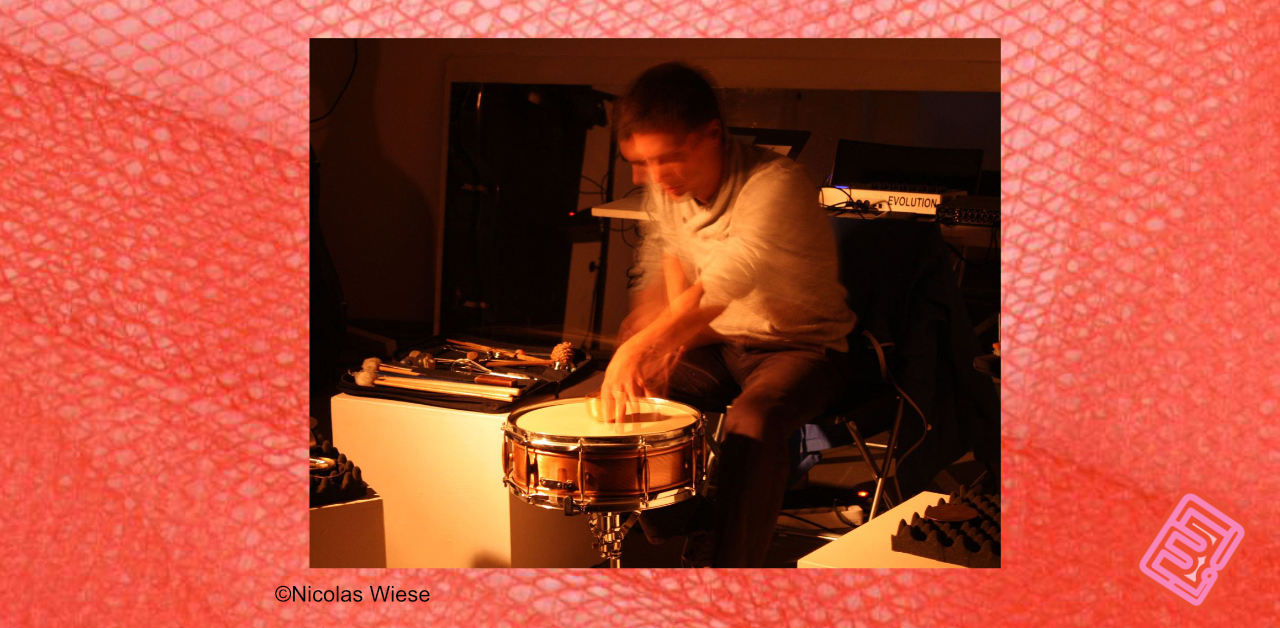
In his solo work, Hannes Lingens uses selected percussion instruments to explore their inherent acoustic qualities. Sometimes within a predefined framework and always in dialogue with the space, he carries out in depth explorations of the instruments’ resonance in the room. His solo work is documented on the releases „Pieces for Percussion“ (Umlaut 2019) and „Simple Extension of the Soul“ (Remote Resonator 2020).

In seiner Soloarbeit verwendet Hannes Lingens ausgewählte Schlaginstrumente, um ihre inhärenten akustischen Qualitäten zu erforschen. Manchmal in einem vordefinierten Rahmen und immer im Dialog mit dem Ort führt er eingehende Erkundungen der Resonanz der Instrumente im Raum durch. Seine Soloarbeit ist auf den Veröffentlichungen „Pieces for Percussion“ (Umlaut 2019) und „Simple Extension of the Soul“ (Remote Resonator 2020) dokumentiert.

Anna-Kaisa Meklin
Born in Finland, lives and works since 2003 in Basel, Switzerland. Musician and improviser.. She is improvising with Viola da Gamba, voice and field recordings and/or creates soundinstallations. Her projects often locate in interspaces between different musical languages, like early music and experimental, free improvised music. She is part of the big improvising and experimental ensembles InsubMetaOrchestra (Geneva) and UnorthodoxJukeboxLargeEnsemble (Basel), and plays actively in many other improvising ensembles in the free music scene. She was artist in residency 2019 at the Embassy of Foreign Artists, Geneva.
Marina Tantanozi (*1985)
is a flutist, improviser and sound artist born in Thessaloniki (GR) and based in Basel (CH). Active in a wide variety of projects between Improvisation, contemporary Jazz, New Music and sound installation, she has worked with artists from various disciplines – such as dance, theatre and visual arts – in numerous projects throughout Europe. As a musician and performer, she has toured with Eve Risser's White Desert Orchestra, Joyful Noise, Insub Meta Orchestra, Aquaserge and Sinfonietta Basel among others. Festival and club performances have led her throughout Europe and Russia. She studied Improvisation, Musicology, Music Pedagogy and Flute Performance and since 2015 she is the curator of KlangBang, a concert series dedicated to improvised music in Basel Switzerland.
Anouck Genthon
is a violinist, improviser and ethnomusicologist. She anchors her work in the development of her own improvised language through the experience of sound and listening. She plays in various contexts at the crossroads of improvised, experimental, contemporary, electroacoustic and traditional music through various projects from solo to large ensemble (solo aẓǝl, duo w/Jacques Demierre, Mathias Forge, Antoine Läng, David Meier, tangent + mek trio, TANDEM trio, Quatuor LGBS, Insub Meta Orchestra, Le UN, Le Recueil des Miracles). She likes to engage in transversal forms of research forms such as sound poetry, theatre and dance (Tǝɣǝrit w/ Jacques Demierre, duo w/Tamara Bacci, Follow the line w/Florence Freitag, The languages came first. The country after., Laborintus X…). His work is published by Newwaveofjazz, Another Timbre, Confront Recordings, UNRec, Insub. Records, Le petit label, Thödol. She is a member of @ptt in Geneva (promotion of acoustic art in the fields of music, language and visual arts). She is the author of ‘Tuareg Music. From political symbolism to aesthetic singularization’ (L’Harmattan, 2012) on the singuarization process of Tuareg contemporary Ishumar music in Niger (UdM Montréal / EHESS Paris).
https://anouckgenthon.com
https://soundcloud.com/anouckgenthon
‚Souvenirs‘ ist das sechste Solo-Album von Christian Wolfarth. Seine erste Solo-CD erschien 1996 unter dem Titel ‚3-3-2‘, erschienen auf Percaso Production, gefolgt von ‚wolfarth‘, seine zweite Solo-CD, welche auf dem Label for4Ears erschienen ist. Seitdem sind verschiedene Produktionen auf seinem, 2009 gegründeten Label hiddenbell records erschienen.
Das Konzert ist Teil einer längeren Release Tour mit Konzerten in der Schweiz und in Deutschland. Christian Wolfarth wird dabei, analog der neuen LP ‚Souvenirs‘, ein Stück für eine kleine Trommel und ein Stück für ein einziges kleines Becken spielen.
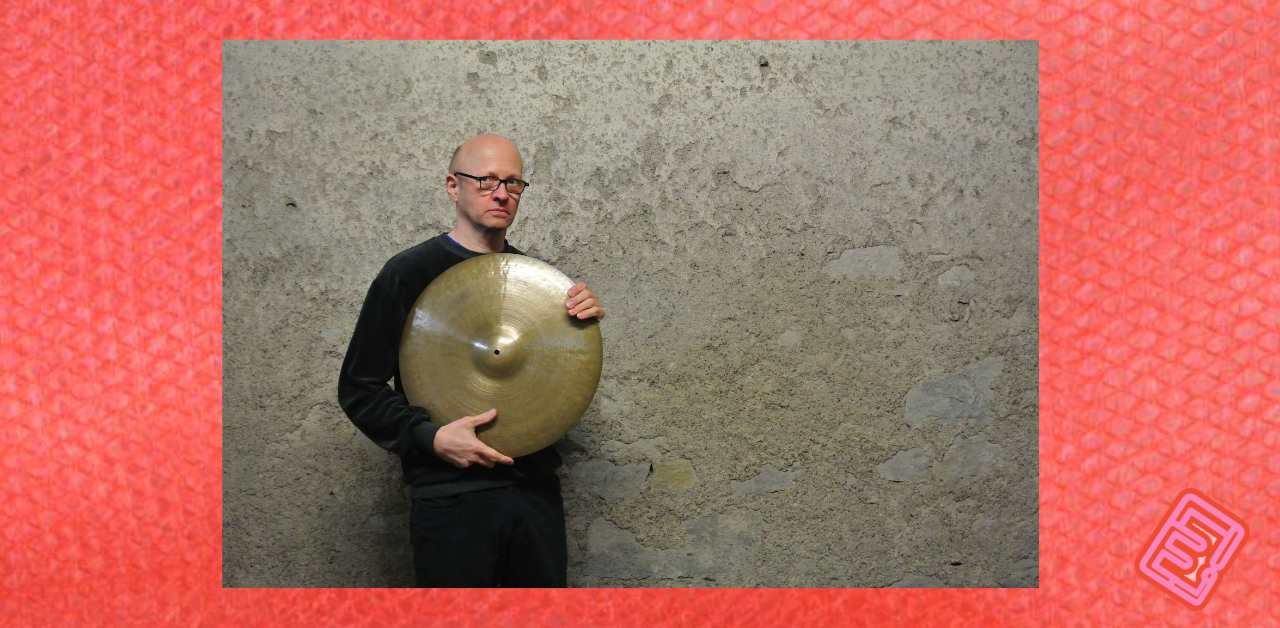
Mit freundlicher Unterstützung der Stadt Zürich/Kultur!

‚Souvenirs‘ is the sixth solo release by Christian Wolfarth. The first solo-CD has released in 1996 at Percaso Productions, following by ‚wolfarth‘ released in 2005 at four4ears. Since 2009 he has released several productions on his own label hiddenbell records, which was founded in 2009.
The concert will be part of a longer solo release tour with concerts in Switzerland and Germany. Analogues to the new LP, Christian Wolfarth will play a piece for a mall drum and a piece for a single small cymbal.

With the friendly support of Stadt Zürich/Kultur!

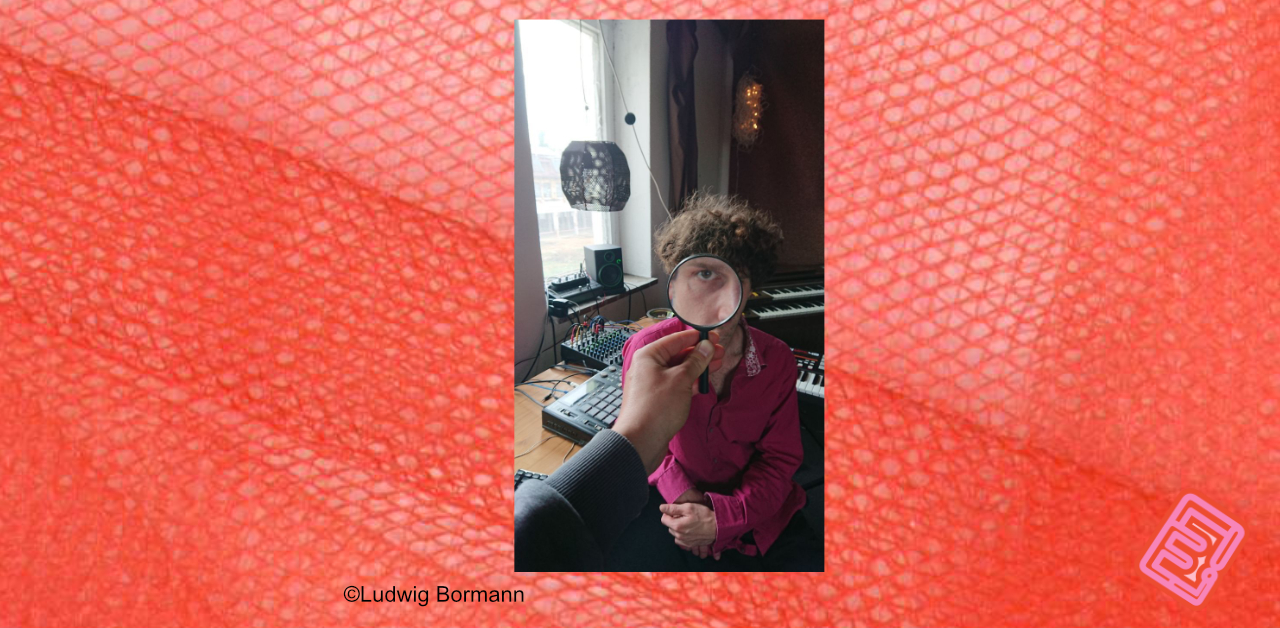
Martin Hesse bewegt sich zwischen elektronischer Musik wie Hip Hop, IDM, Industrial, Techno, Glitch, Footwork und anderen Formen experimenteller elektronischer Musik und nutzt dafür Synthesizer, Sequencer, Sampler und digitale Audioworkstations. Mit Hilfe von Körperschallwandlern werden vier Metallobjekte angeregt zu schwingen. Jedes Objekt hat dabei einen eigenen Klangcharakter, welchen es in seiner Vielseitig auszuloten gilt.

Martin Hesse is interested in Hip Hop, IDM, Industrial, Techno, Glitch, Footwork and otherforms of experimental electronic music. As a result, Martin Hesse used more and morethe production techniques of this music such as synthesizers, sequencers, samplers anddigital audio workstations through the computer. With the help of transducer sound converters, four metal objects are excited to vibrate. Each objecthas its own sound character, which is to be explored in its diversity.
With the help of transducer sound converters, four metal objects are excited to vibrate. Each object has its own sound character, which is to be explored in its diversity. Different audio material is thus alienated, changed and unconventionally reproduced, whereby this 4-channel playback system forms the opposite pole to conventional playback systems that are as linear as possible. In the interplay, sometimes complex soundscapes, sometimes reduced compositions arise, which also explore the dimensions of the room.
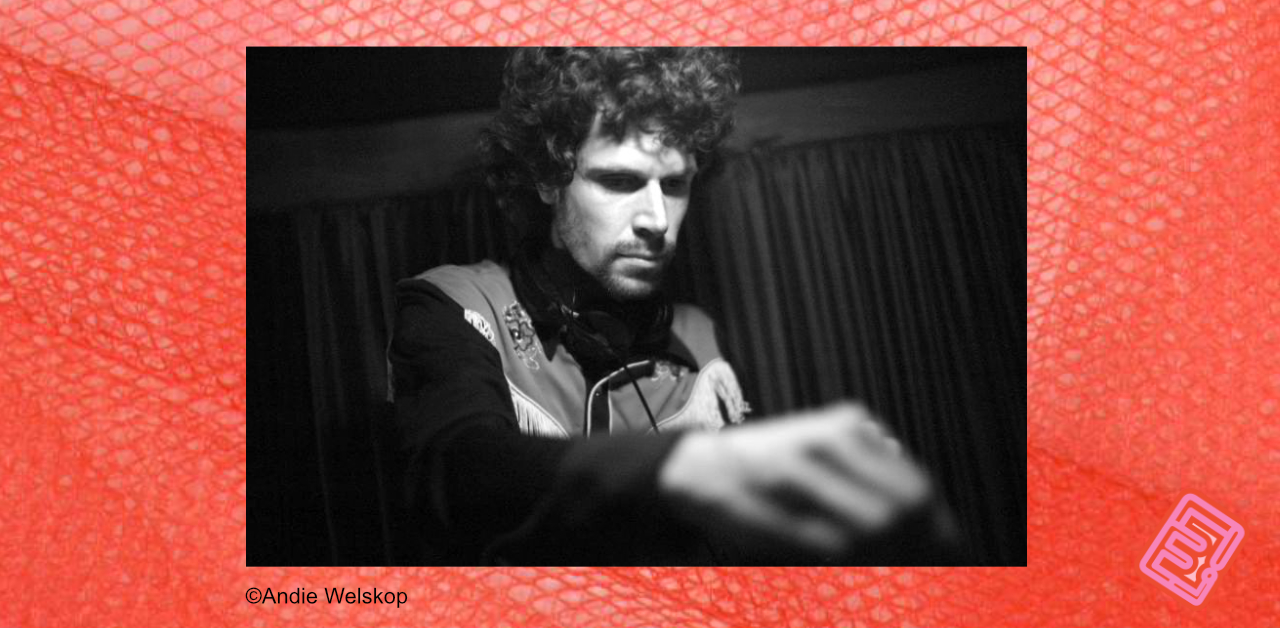
Mit Hilfe von Körperschallwandlern werden vier Metallobjekte angeregt zu schwingen. Jedes Objekt hat dabei einen eigenen Klangcharakter, welchen es in seiner Vielseitig auszuloten gilt. Unterschiedliches Audiomaterial wird dadurch verfremdet, verändert und eigenwillig reproduziert, wodurch dieses 4-Kanal-Wiedergabesystem einen Gegenpol zu herkömmlichen, möglichst linearen Wiedergabesystemen bildet. Im Zusammenspiel entstehen dadurch mal komplexe Klangflächen, mal reduzierte Kompositionen, welche auch die Dimension des Raumes erkundet.

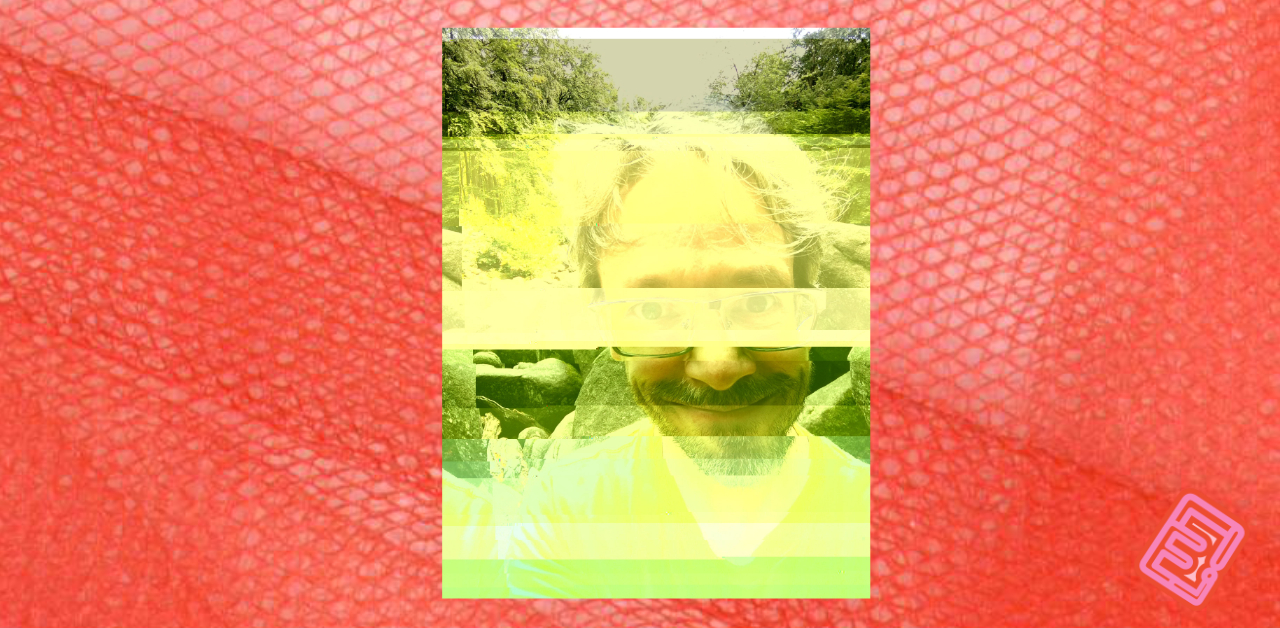
“Simon Schäfer is this guy. He studied art and stuff at prestigious places in Offenbach and London and the internet and then he got some degrees. He has this olperulch noise-parasite der Warst sharing his body, mind and laboratory of colourful circuit bent instruments. Otherwise he does all the things. Well, at least nearly all of them. Quelopjolp wöh zjernölcher Ramle gah Wreep.
Information overlord challenging perception.”

“Simon Schäfer ist ein interdisziplinärer Künstler aus Leipzig. Er studierte Bildhauerei und Medienkunst an der HfG Offenbach, MA Sculpture am Londoner Royal College of Art, und Circuit Bending und audiovisuelle Experimentalelektronik im Internet.
Seine Arbeit umfasst eine breite Palette an Ausdrucksformen, von Objekten und Rauminstallationen über Musik bis zu Video, Instrumentenbau, Performance, Workshops, Theater und Sachen, für die dem Herrn Schäfer gerade keine sinnvollen Begriffe einfallen. Gemacht wird halt, was grad ansteht. Wichtige Aspekte seiner Arbeit sind Ideen von Re- und Upcycling und der Verwendung von Endprodukten zu Ausgangsmaterialien sowie einer Verzerrung und Überlastung der Wahrnehmung als Mittel der Horizonterweiterung. Quelopjolp wöh zjernölcher Ramle gah Wreep.
Sein performativer Lärmparasit „der Warst“ nutzt ein farbenfrohes Laboratorium aus selbstgebauten Instrumenten für intensive improvisierte A/V- Performances irgendwo zwischen Noise, Punk, Sound Art und Clubkultur.”
A plan, a decision.
What is being played, what topics are being dealt with, what is there to report and how does that sound like?
Simon Schäfer himself does not know all this yet. Not only will he play the concert unusually under his civil name and not his old ego “the Warst” (which doesn’t happen often and therefore certainly means something important), he has also hardly made any music since the beginning of the Corona measures, and certainly not in front of an audience.
Probably he will bring some equipment with him, which originally wasn’t meant for making music at all, but which he then redesigned to make it possible. An answering machine or a Playstation 2 or a Discman or something. Well, the answering machine will come along in any case. It always fits anyway, and it works. With everything else, it depends on whether it is screwed together and ready for use at the time.
And then it will be an experience anyway.
Ein Plan, eine Entscheidung.
Was wird gespielt, welche Themen bearbeitet, was gibts zu melden und wie
hört sich das dann an?
Simon Schäfer weiß das alles selbst noch nicht. Nicht nur wird er das Konzert ungewohnterweise unter seinem bürgerlichen Namen und nicht seinem alter Ego “der Warst” spielen (was nicht oft vorkommt und daher ja sicherlich etwas wichtiges bedeutet), er hat auch seit Beginn der Corona-Maßnahmen kaum Musik gemacht, und schonmal gar nicht vor Publikum.
Vermutlich wird er einige Geräte mitbringen, die ursprünglich überhaupt nicht zum Musizieren gedacht waren, die er dann aber umgedingst hat, damit das dann möglich wird. Einen Anrufbeantworter oder eine Playstation 2 oder einen Discman oder so. Naja, der Anrufbeantworter kommt auf jeden Fall mit. Der passt ja sowieso immer, und der funktioniert auch. Bei allem anderen hängt es ja auch davon ab, ob es zum betreffenden Zeitpunkt auch zusammengeschraubt und einsatzbereit ist.
Und ein Erlebnis wird dann dann ja sowieso.
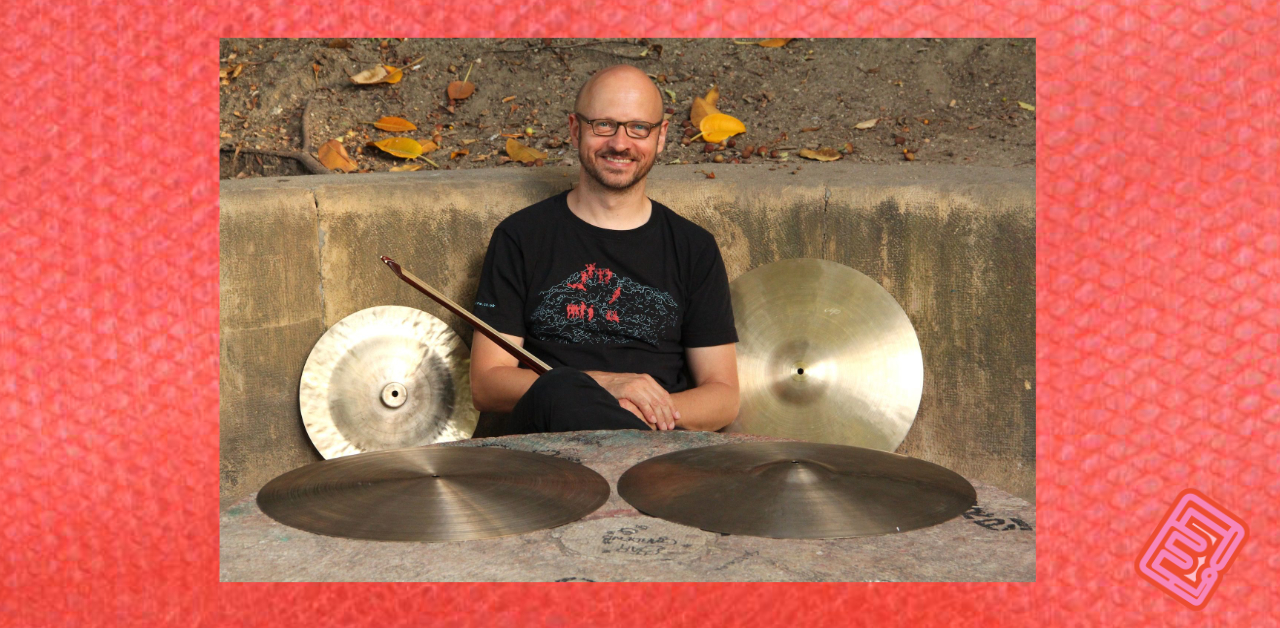
was born 1960 in Zürich. After some short experiences with the guitar and the electric-bass, he started playing drums in a local blues & rock band. With this and he played his first concert a few weeks later.
1981 he moved to Bern and studied for four years at the Swiss Jazz School. (1982-86) His teachers were Bob Cunningham and Billy Brooks. At the same time his interest in Contemporary Music, in different styles in improvised music and the solo playing grows.
From 1992-96 he studied with Pierre Favre at the Conservatory in Luzern.
Workshops and Masterclasses with Han Bennink, Jojo Mayer, Piere Favre, Alexander von Schlippenbach and George Lewis.
1995 he did some studies in composition with Siegfried Kutterer in Basel.
He has worked with a large number of musicians from the international improvisation scene, including: Burkhard Beins, John Butcher, Bertrand Denzler, Axel Dörner, Jacques Demierre, Barry Guy, Jason Kahn, Hans Koch, Tomas Korber, Annette Krebs, Norbert Möslang, Lauren Newton, Evan Parker, Alex von Schlippenbach, Irène Schweizer, Michael Vorfeld and many others.
Christian Wolfarth has been a soloist since 1991 and has played over 150 solo concerts between Lisbon and Moskow.
2006 he received the ‚Werkjahr Musik‘ from the City of Zürich.
2018 the duo Buck/Wolfarth received the ‚Werkjahr Interpretation‘ from the City of Zürich.

1960 in Zürich geboren, setzte sich Christian Wolfarth, nach kurzen Versuchen an der Gitarre und am E-Bass, im Februar 1978, zum ersten Mal an ein Schlagzeug. Mit einer gleichzeitig gegründeten Blues-Rock Band spielte der Autodidakt wenige Wochen später sein erstes Konzert.
1981 Umzug nach Bern, um von 1982-86 an der Swiss Jazz School zu studieren. Seine Lehrer waren Bob Cunningham und Billy Brooks. Gleichzeitig beschäftigt er sich neben dem Jazz mit verschiedenen Formen der improvisierten Musik und dem Solo-Spiel.
1992-96 Studium bei Pierre Favre am Konservatorium Luzern.
1995 Kompositionsstudien bei Siegfried Kutterer in Basel. Workshops und Masterclasses bei George Lewis, Alexander von Schlippenbach, Jojo Mayer,
Pierre Favre und Han Bennink.
Zunehmendes Interesse an der Zeitgenössischen Musik. Zahlreiche Auftragskompositionen mit dem Duo Buck/Wolfarth interpretiert,
Werke u.a. von Barblina Meierhans, Edu Haubensak, Alfred Zimmerlin und Jürg Frey.
Zusammenarbeit mit vielen namhaften MusikerInnen der internationalen Improvisationsszene u.a. mit: Burkhard Beins, John Butcher, Bertrand Denzler, Axel Dörner, Jacques Demierre, Barry Guy, Jason Kahn, Hans Koch, Tomas Korber, Annette Krebs, Norbert Möslang, Lauren Newton, Evan Parker, Alex von Schlippenbach, Irène Schweizer, Michael Vorfeld und vielen anderen.
Seit 1991 ist Christian Wolfarth häufig als Solist zu hören und spielte bislang über 150 Solo Konzerte zwischen Lissabon und Moskau.
2006 erhält Christian Wolfarth das Werkjahr Musik der Stadt Zürich.
2018 erhält das Duo Buck/Wolfarth das Werkjahr Interpretation der Stadt Zürich.
Sonata Per Eterna – komposition (2018-19)
Diese Komposition verbindet die Bedeutung einiger Wortkombinationen mit ausgewählten Radiowellen und mit Signalen natürlicher Radiophänomene, die ich in den letzten Jahren in verschiedenen Ländern aufgenommen habe. Das stück ist inspiriert von meiner persönlichen, sehr romantischen Idee sowie von wissenschaftlichen Untersuchungen zur Reise der seele nach dem Tod in einem Universum, das sich in unaufhörlicher Bewegung befindet. Die von der Seele gesendeten Signale verlassen den Körper in Form purer Energie und gelangen in den Weltraum, wobei sie einige Sternenstürme, Planeten, Pulsare, schwarze Löcher und intergalaktischen Staub passieren, bis sie in die Krasnikov-Röhre gelangen: Eine Verzerrung der Raum-Zeit, die sich, wenn man sich fast in Lichtgeschwindigkeit fortbewegt, Bewusst erzeugen läßt. So erreicht die Seele ihren Bestimmungsort und entdeckt das „Ewige“ in einem anderen Universum. Das Bruchstück eines Meteors kehrt zusammen mit einer symbolischen Botschaft, die zugleich das Geheimnis neuen Lebens mit sich bringt, zur Erde zurück. Das stück wird während der Aufführung in Echtzeit mit Verwendung von Bandmaschinen gespielt, Antenne , Meteorit.
Sonata Per Eterna ist meinem Vater und seiner Seele gewidmet.
(Er war Autodidakt: Dichter, Liedermacher, Komponist, Musiker)
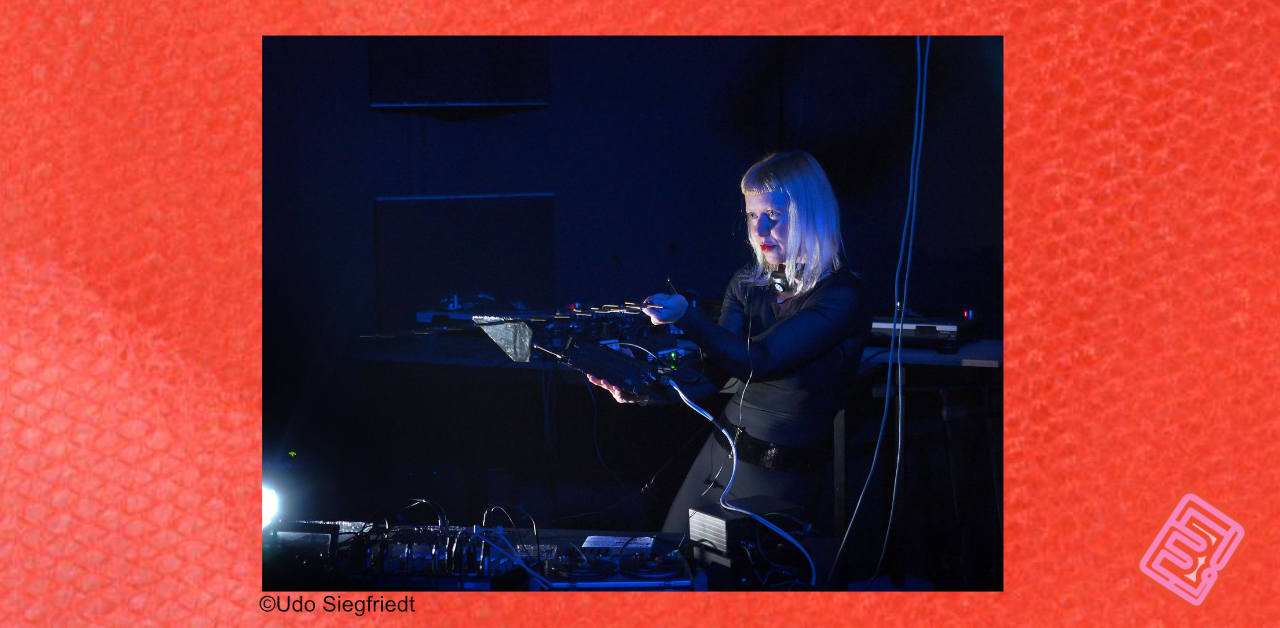
Sonata Per Eterna – Composition (2018-19)
“Sonata Per Eterna” it is deep personal work in between spirituality and science, in which the meaning of some combinations of words are connected to selected self-recorded electromagnetic radiation, signals from the outer space ( the sun, meteor), VLF (Natural Radio phenomena), and Radio wave communication (morse code, air communication, naval communication, and VHF). This piece is inspired by my personal romantic idea feed it also by scientific notions about the journey of the soul after death to
perpetual motion in the universe. “The signal of the soul thought as a pure energy form leaves the body and reach the outer space passing across cosmic storms, planets, pulsar stars, black holes, intergalactic dust, stellar winds to enter in the Krasnikov tube: a distortion of space-time that can be intentionally created in the wake of travel close to the speed of light. Through it, the soul will be able to reach the final destination discovering “Eternal” in another universe. A piece of meteor comes back to earth as a symbol-messenger, bringing with it the secret of a new beginning of life. ” During the performance, the composition is played in real-time with the use of tape recorders, reel to reel tape machine, antenna and a meteorite.
“Sonata Per Eterna” is dedicated to my father Giuseppe Zapparoli.
(He was self-taught poet, singer-songwriter, composer, musician)

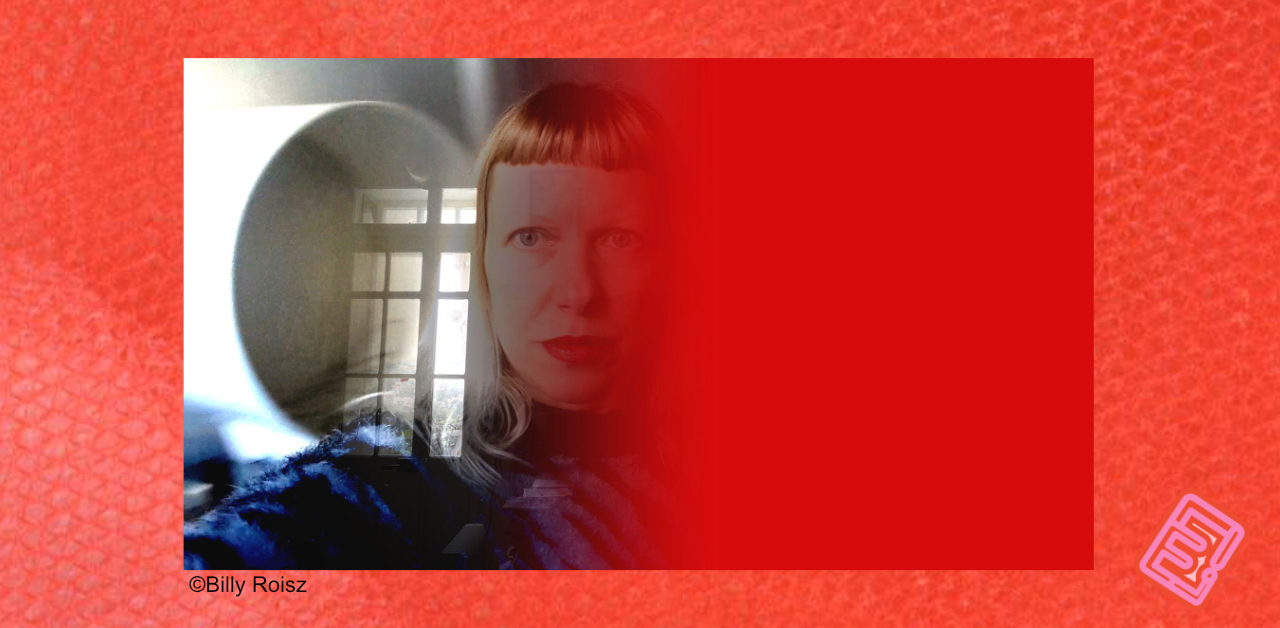
Marta Zapparoli is an Italian experimental sound artist, improviser, performer, and self-taught researcher active in sound art since 2003. In her work there is a deep relationship between energies: electromagnetic radiations, sensory experience, acoustic sound and electro magnetic fields. She employs a wide range of experimental techniques and equipment, often using scientific and technological tools including antennas (many of them self-built)as well as detectors, radio receivers, and sdr, magnetic tape, sensors). In recent years her practice has been focused on self-made recordings of the electromagnetic spectrum coming from the atmosphere and from outer space, as primary materials for her artistic investigation. These environments are an endless source of information and they stimulate her imagination, creativity, and awareness, allowing her to enter into boundless territories. She brings the invisible sonic web into a distinct aurality, transforming reality into new visions through compositions, live performances, and site-specific sound interventions.
Besides her solo project, she has extensive duos and larger
group collaborations including Pareidolia with (Liz Allbee), The Elks Fagaschinski, Roisz, Allbee), the Circuit Training V Ensemble, Vertigo Transport (with Burkhard Beins), a duo with Billy Roisz, a duo with Greta Christensen, a trio with Martin Lorenz & Sebastian Hofmann. She is a member of Berlin’s 24-piece Splitter Orchester since 2009. She has played with many regarded musicians and bands and has performed worldwide in festivals such as: Maerzmusik, Atonal, A’LARME, Fusion, Darmstädt, Sincussion, Heroines of Sound, Eavesdrop (Germany), Huddersfield, Sonorities, Colour Out Of Space (UK), Borealis (Norway), Sonic Circuit , High Zero (US), Geiger (Sweden), Konfrontationen, ArtActs (Austria), Zwei Tage Strom, Earweare (Switzerland), Crack, Meteo Mulhouse Music Fest (France), Alternativa (CZ) among others. She has released solos on the record labels Idiosyncratic, Zeromoon, Glistening Examples, and on TMRW tapes. Collaborative releases on: Mikroton, NebulaRosa, Spina, Gagarin, Urban Art, and Nohmand records.
Info: http://martazapparoli.klingt.org

Marta Zapparoli ist eine italienische experimentelle Klangkünstlerin, Improvisatorin, Performerin und autodidaktische Forscherin, die seit 2003 in der Klangkunst tätig ist. In ihrer arbeit gibt es eine tiefe beziehung zwischen energien, elektromagnetischen, magnetischen, Radiowellen, sensorischen und Materie, sowie dem Akustischen. Sie setzt auch eine breite Palette von experimentellen Techniken und Geräten ein. Sie verwendet wissenschaftliche und technologische werkzeuge (u.a. Antennen, einige davon selbstgebaut und Detektoren, Radioempfänger, SDR) als medium, um ihr Klangprojekt zu entwickeln. In den letzten Jahren konzentrierte sich ihre praxis auf selbstgemachte aufnahmen des elektromagnetischen spektrums, das aus der atmosphäre und dem weltraum stammt, als primäres material für ihre künstlerische Untersuchung. Diese Umgebung ist eine unerschöpfliche informationsquelle, die ihre vorstellungskraft, Kreativität und ihr bewusstsein anregt und es ihr erlaubt, grenzenlose bebiete zu betreten. Sie bringt das unsichtbare Klangnetz in eine ausgeprägte Auralität und verwandelt die realität durch Kompositionen, live-performances und ortsspezifische Klanginterventionen in neue Visionen. Neben ihrem soloprojekt hat sie ausgedehnte duos und Zusammenarbeit mit größeren Gruppen, darunter: Pareidolia mit (Liz Allbee), The Elks (Kai Fagaschinski, Billy Roisz, Liz Allbee), Circuit Training V ensemble, Vertigo Transport mit (Burkhard Beins), Duo mit Billy Roisz, Duo mit Greta Christensen, Trio mit Martin Lorenz, Sebastian Hofmann. Seit 2009 ist sie mitglied des 24-köpfigen Berliner Splitter Orchester.
Sie hat mit vielen angesehenen musikern und bands gespielt und ist weltweit bei festivals wie: Maerzmusik, Atonal, A’LARM, Fusion, Darmstädt, Sincussion, Heroines of Sound, Eavesdrop (Deutschland), Huddersfield, Sonorities, Colour out of Space (UK), Borealis (Norwegen), Sonic Circuit , High Zero (US), Geiger (Schweden), Konfrontationen, ArtActs (Österreich), Zwei Tage Strom, Earweare (Schweiz), Crack, Meteo Mulhouse Music Fest (Frankreich), Alternativa (CZ) u.a .
Sie veröffentlichte als solistin auf: Idiosyncratic rec, Zeromoon rec, TMRW tape label, Glistening Examples rec. Gemeinsame veröffentlichungen auf: Mikroton rec, NebulaRosa Rec, Spina rec, Gagarin Rec, Urban Art rec,
Nohmand rec.
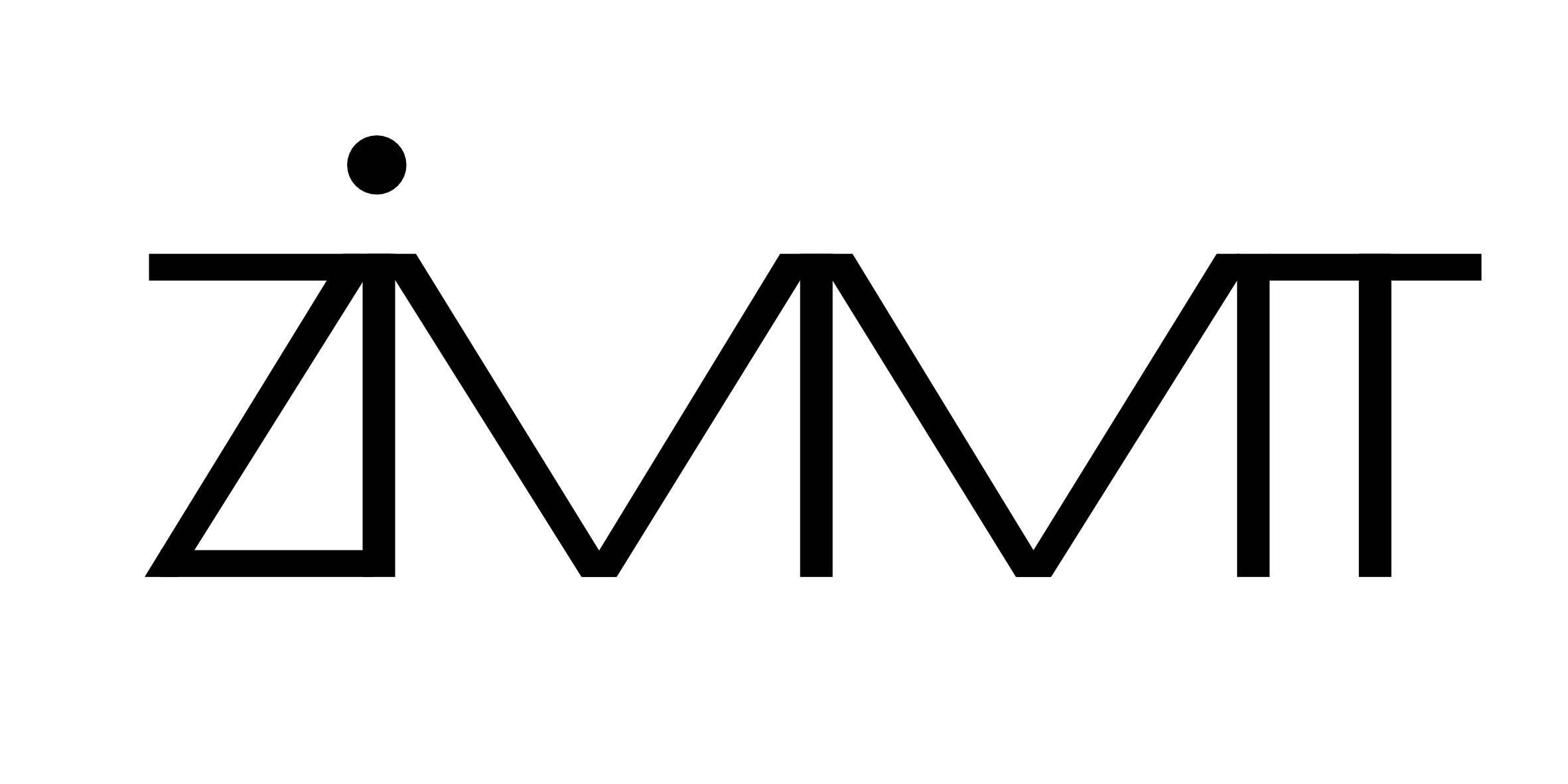
The ZiMMT – Center for Immersive Media, Music and Technology – is a hub for art, science and technology. In direct exchange about innovations in the field of immersive media technologies, developers, creative users and interested members of the public can come here together to test and experience the latest developments in the domain. You can currently follow current events around the initiative on Instagram and soon also on www.zimmt.net.
Please note: entrance only for members of the ZiMMT e.V.. Free registration available before the concerts.
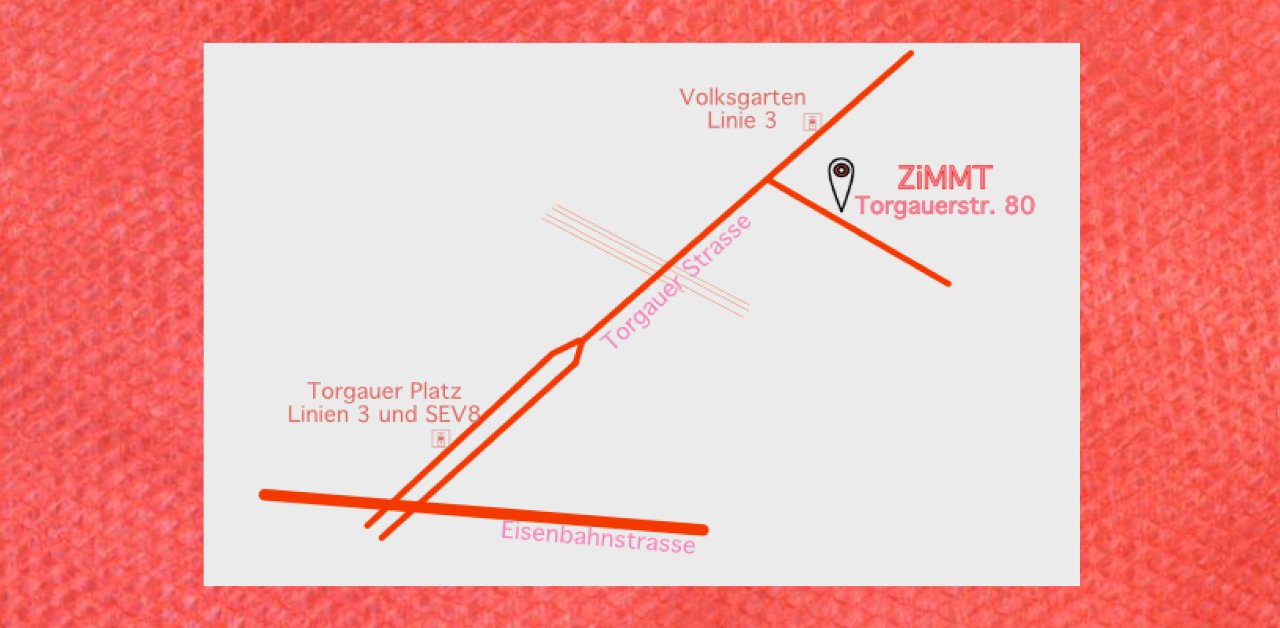

Das ZiMMT – Zentrum für immersive Medien, Musik und Technologie – ist Knotenpunkt von Kunst, Wissenschaft und Technologie. Im direkten Austausch über Innovationen im Bereich immersiver Medientechnologien können hier Entwickler*innen, kreative Anwender*innen und interessiertes Publikum zukünftig zusammenkommen, um neueste Entwicklungen zu erproben und zu erfahren. Aktuelle Geschehnisse rund um die Initiative könnt ihr momentan auf Instagram und bald auch auf www.zimmt.net verfolgen.
Hinweis: Betreten des Ortes nur für Vereinsmitglieder. Kostenlose Anmeldung vor den Konzerten.

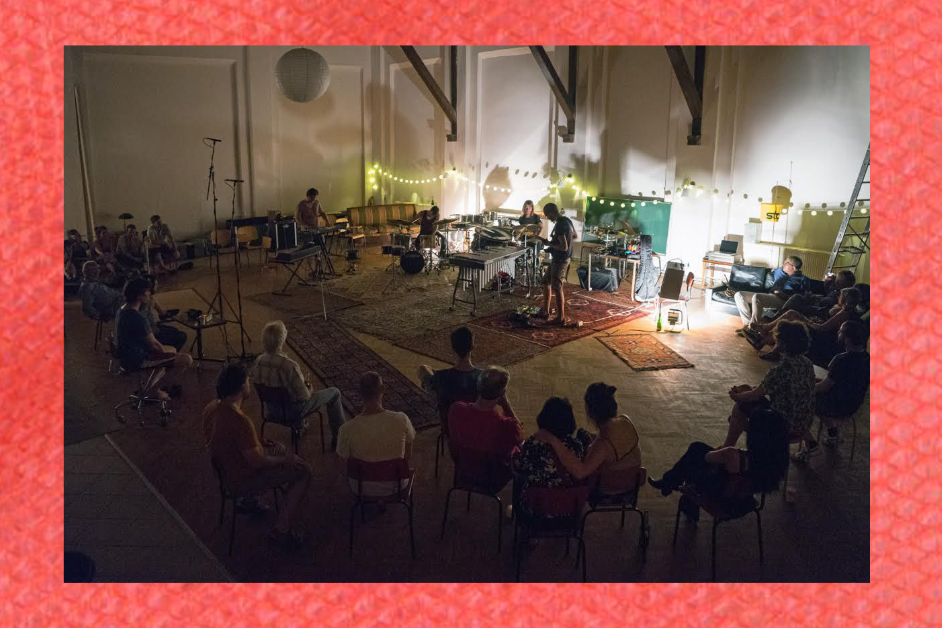
Aus der ehemaligen Turnhalle entstand die „Kulturnhalle“, ein Ort der Begegnung und verschiedener Kulturveranstaltungen.
Die Location hat sich u.a. intimen und besonderen Konzerten verschrieben. Sie zeichnet sich durch eine gute Akustik und einzigartige Atmosphäre aus.
Es gibt keine Bühne im herkömmlichen Sinn, sondern ein ganzheitliches Raumkonzept welches die Musiker in direkten Kontakt mit den Zuhörern stellt.
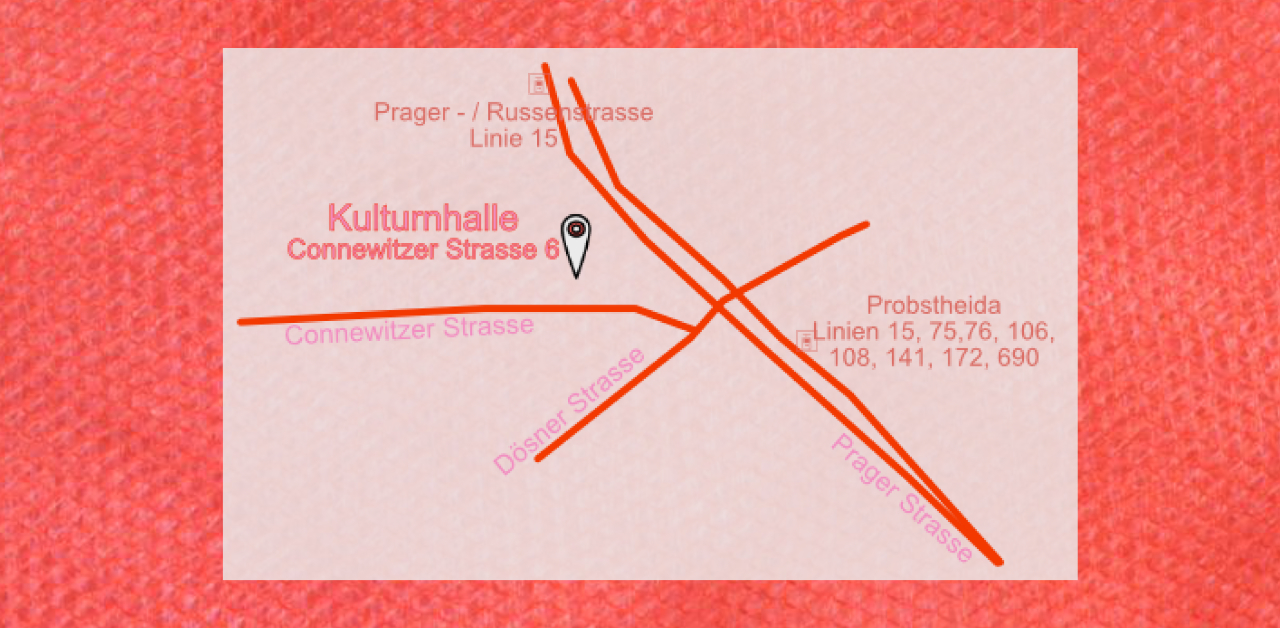

The old sport hall was turned into the “Kulturnhalle”, a place to meet and for various cultural events.
Among other things, the location has dedicated itself to intimate and special concerts. It is characterized by good acoustics and a unique atmosphere.
There is no stage in the conventional sense, but a holistic spatial concept that puts the musicians in direct contact with the audience.

A musical instrument is an object that has been constructed or modified with the aim of producing music. In principle, any object that produces sounds or even noises can serve as a musical instrument, but the expression is normally only used for objects that have been made or modified for this purpose.
Pina Rücker and Stefan Schleupner limit the source for the creation of sound to the mineral silicium.
The interplay shows a tension between a purely mechanical-acoustic use and the electro-acoustic use of the medium.
Through the communication of these positions, which are contradictory in their approach, Pina and Stefan create a sculptural sound event that transports the listener into a utopian experience of sound, time and space.
Ein Musikinstrument ist ein Gegenstand, der mit dem Ziel konstruiert oder verändert wurde, Musik zu erzeugen. Im Prinzip kann jeder Gegenstand, der Töne oder auch nur Geräusche hervorbringt, als Musikinstrument dienen, jedoch wird der Ausdruck normalerweise nur für solche Gegenstände verwendet, die zu diesem Zweck hergestellt oder verändert wurden.“
Pina Rücker und Stefan Schleupner limitieren die Quelle der Erzeugung des Klangbildes auf das Mineral Silicium.
Das Zusammenspiel zeigt einen Spannungsbogen durch einen rein mechanisch-akustische Gebrauch und der elekro – akustische Verwendung des Mediums.
Durch die Kommunikation dieser im Ansatz gegensätzlichen Positionen lassen Pina und Stefan ein skulpturales Klangereignis entstehen, welches die Hörer innen in eine utopische Klang-, Zeit- und Raumerfahrung versetzt.
Pina Bettina Rücker as an expert of sound architecture has been exploring the possibilities of using singing bowls as musical instruments on stage for ten years now. She uses their three-dimensional effect as a space-sound instrument and the humanly perceivable dimensions of space and time.
Stefan Schleupner got in contact with experimental music in the post-soviet neighbourhood in the late 90s. He grew up in a DIY subculture between punk, breakdance and painting and now combines this mix in his music.
Stefan Schleupner bekam Ende der 90er Jahre Kontakt zu experimenteller Musik in der postsowjetischen Nachbarschaft. Er wuchs in einer DIY-Subkultur zwischen Punk, Breakdance und Malerei auf und verbindet dies nun in seiner Musik.
kommt bald
kommt bald
kommt bald
coming soon
coming soon
coming soon
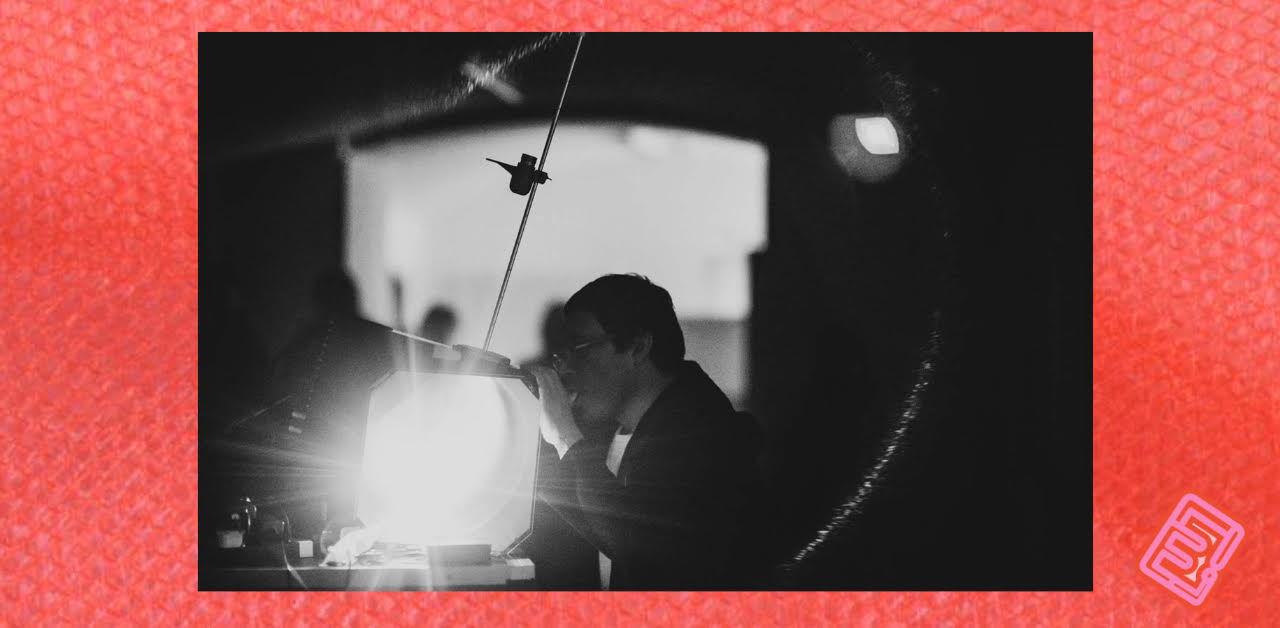

Born in Mexico City. Lives and works in Berlin and Mexico City
Mario de Vega´s work is contextual, embracing the tension between documentation and performativity. Induced situations, dramaturgies, remains of actions, events, and situations producing ambiguous relations between objects and spaces.
He has been guest artist and lecturer at Universität der Künste Berlin, Rijksakademie Amsterdam, Internationales Musikinstitut Darmstadt, Technische Universität Berlin, Ecole Nationale Supérieure des Beaux Arts de Paris, Kyushu University, écal, Universität für angewandte Kunst Wien, among others.
His work has been exhibited in Mexico, North America, Chile, South Africa, India, South Korea, China, Russia, Japan and around Europe.
Since 2020, Mario de Vega is Professor for Sound at Kunsthochschule Kassel.
Rohe elektronische Signale, die durch elektrische Hindernisse induziert werden, vermischt mit gestreuter akustischer Aktivität, die aus chemischen Reaktionen, Spannungsschwankungen und abrupten Signalleitungsschwankungen resultiert. Währenddessen stapeln sich Objekte übereinander und sind anfällig für einen Zusammenbruch.
Klangfülle, Präsenz und Unsichtbarkeit sind die Ausgangspunkte der künstlerischen Arbeit und Forschung von Mario de Vega. Indem er Situationen heraufbeschwört, befasst sich sein Werk mit Fragen und Themen, die man als “produktive Destabilisierung” bezeichnen könnte. Die Verwendung von Strategien als Handzettel, oder besser gesagt, die Forderung, ein Erklärungsformular zu unterzeichnen, um die Verantwortung für die eventuellen Folgen eines Kunstausstellungsbesuchs zu übernehmen, keine offensichtlichen Warnhinweise, Blindheit, otoakustische Phänomene, architektonische Barrieren oder das Hervorrufen mehrdeutiger Situationen zwischen akustischen Phänomenen und Signalverstärkung. Ambivalenzen zwischen Prozessen und Ergebnissen, zwischen dem Offensichtlichen und dem Unbekannten.
Seine performative Praxis ist sowohl improvisatorisch als auch kontingent. Im Studio entwickelt de Vega Präsentationsmodi für Stücke, die sonst in einem traditionelleren Kunstkontext, wie der Galerie oder dem Museum, nicht zugänglich sind.
Ein grundlegender Teil seiner Praxis konzentriert sich auf die Bildung, indem er den Wert der Wissensproduktion ausübt.
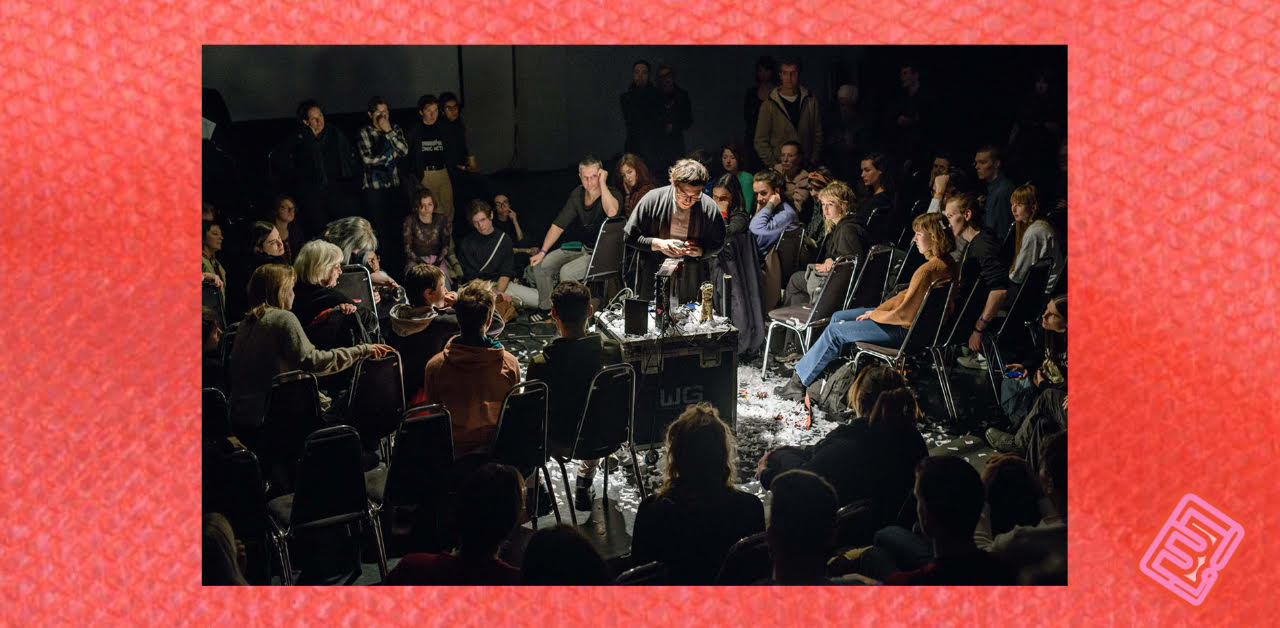
Raw electronic signals induced by electric obstructions, mixed with scattered acoustic activity resulting from chemical reactions, voltage fluctuations, and abrupt signal-routing variations. All the while, objects are piled on top of one another and are prone to collapse.
Sonority, presence and invisibility are starting points of Mario de Vega’s artistic work and research. By evoking situations, his work addresses questions and issues that could be called “productive destabilization”. Utilising strategies as handouts, or rather the requirement to sign a declaration form to take over the responsibility for eventual consequences of an art exhibition visit, no obvious warning labels, blindness, otoacoustic phenomena, architectonic barriers, or provoking ambiguous situations between acoustic phenomena and signal amplification. Ambivalences between processes and results, between the obvious and the unknown.
His performative practice is both improvisational and contingent. In the studio, de Vega develops modes of presentation for pieces that are otherwise not amenable to a more traditional art context, like the gallery or museum.
A fundamental part of his practice focuses on education, exercising the value of knowledge production.

